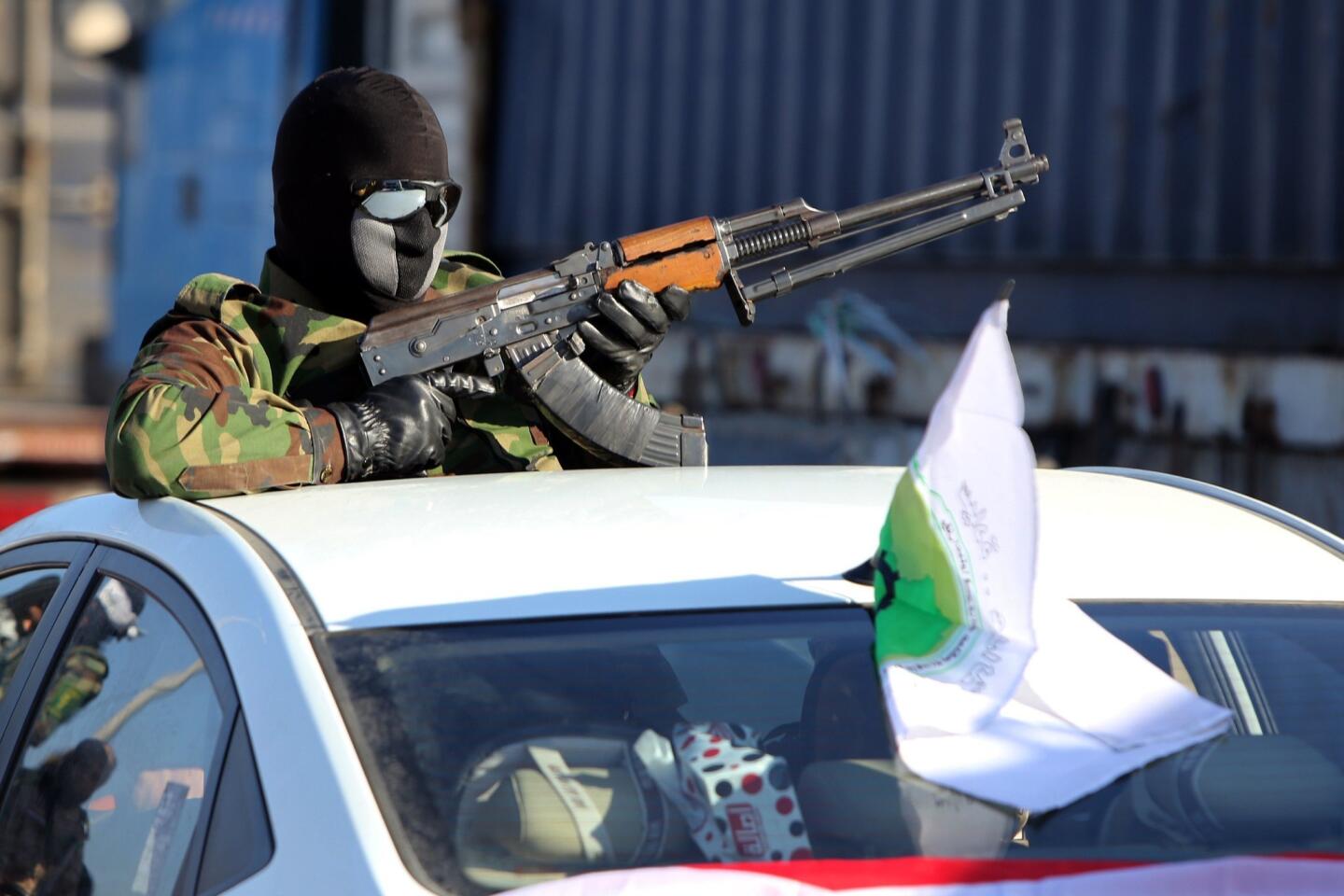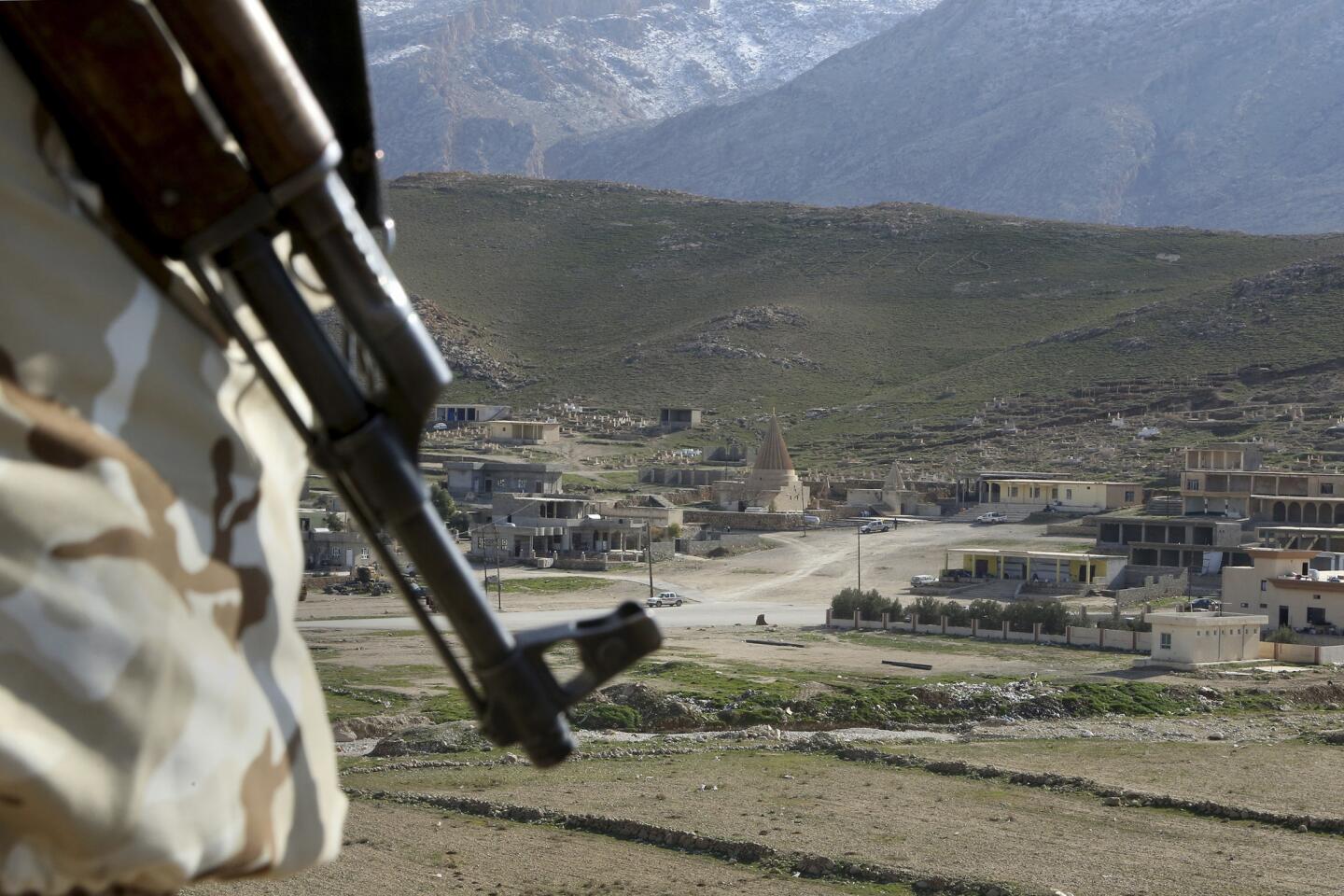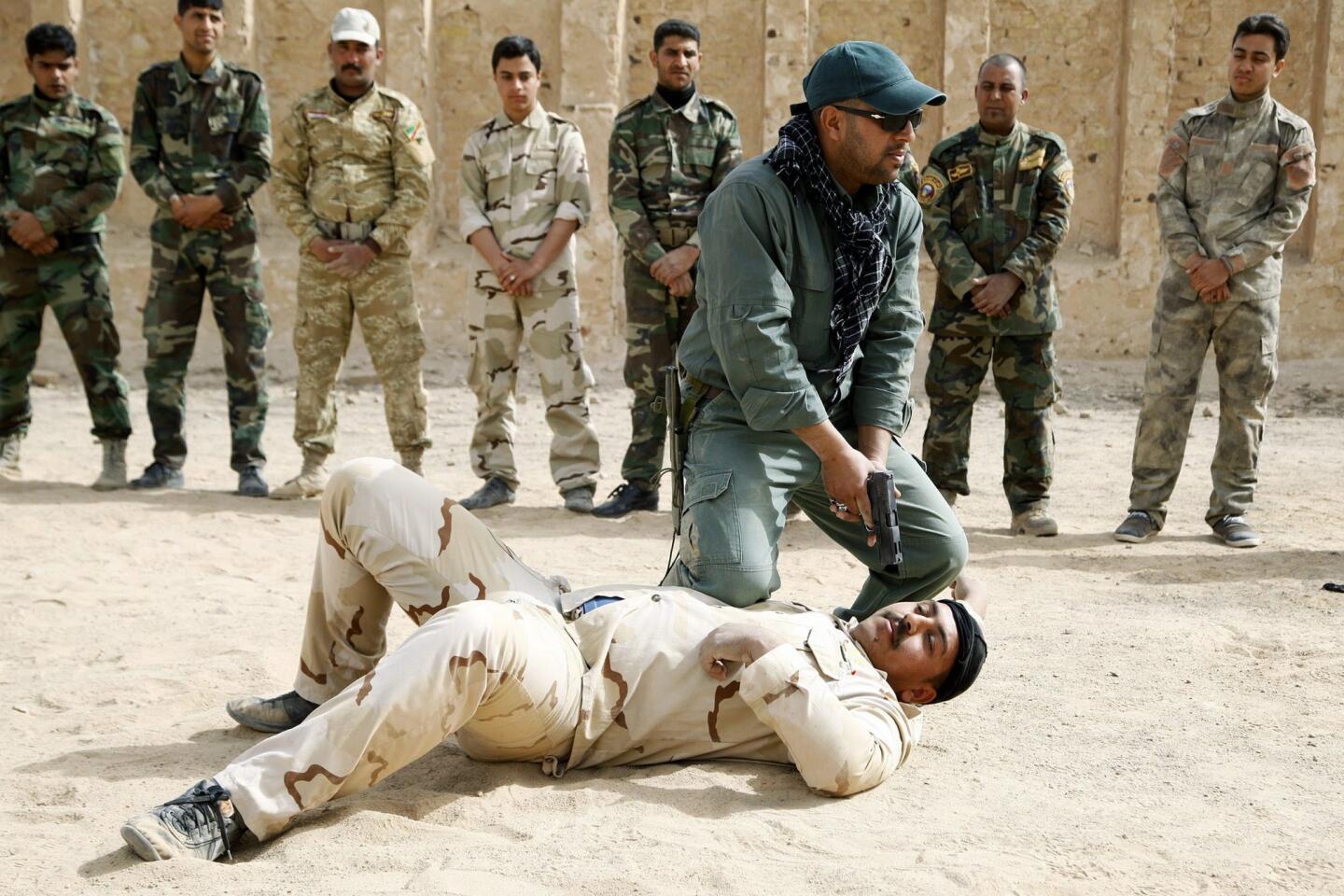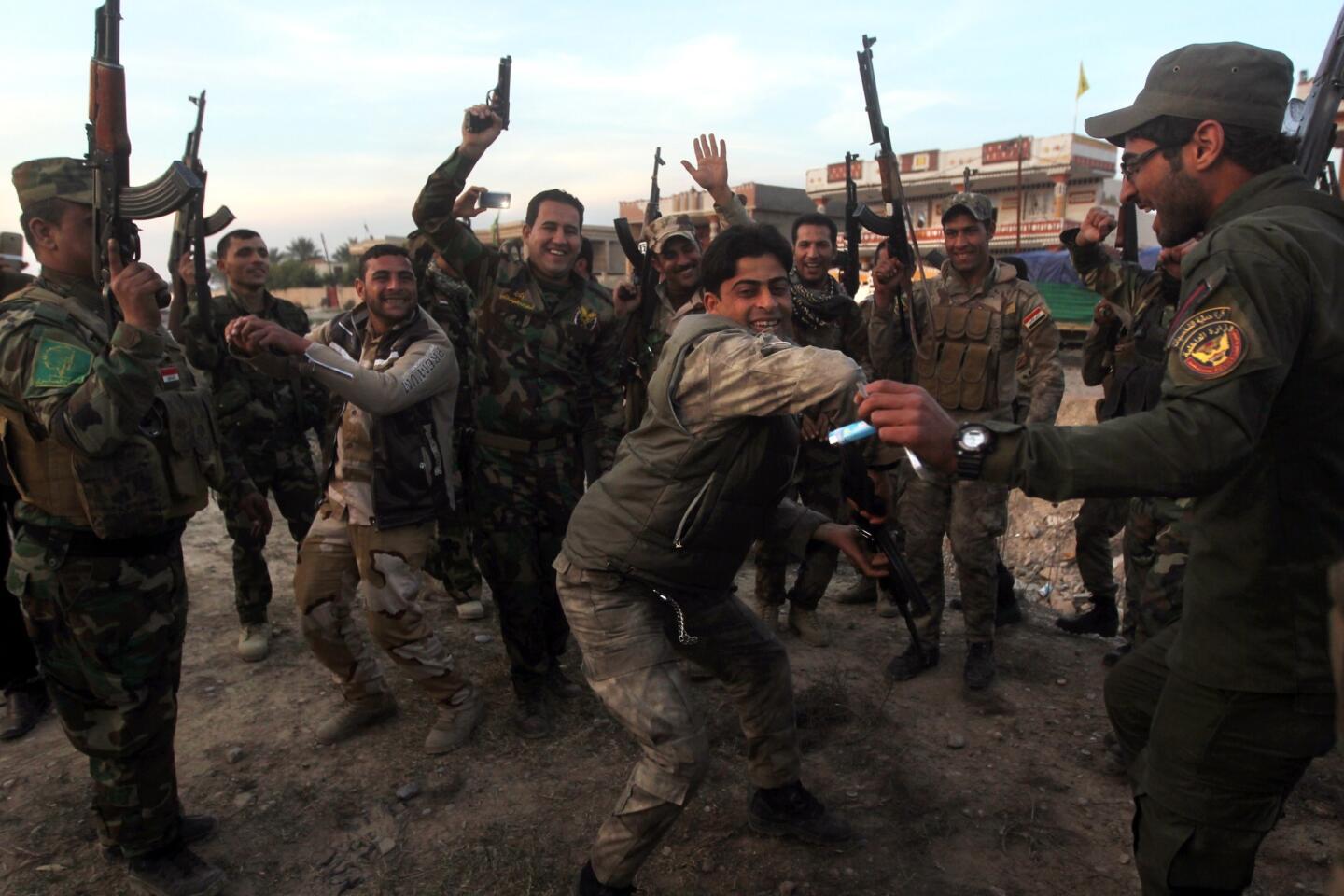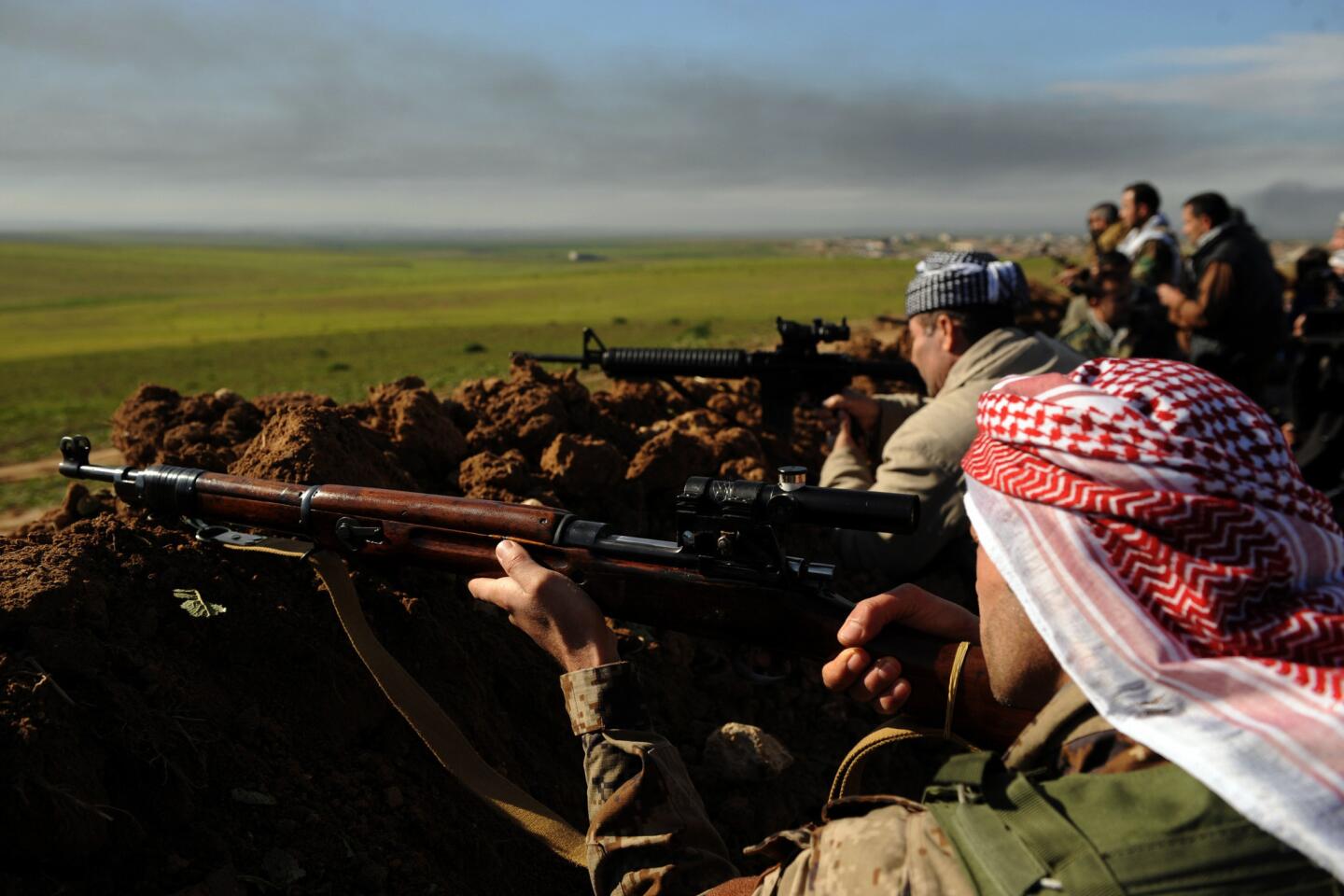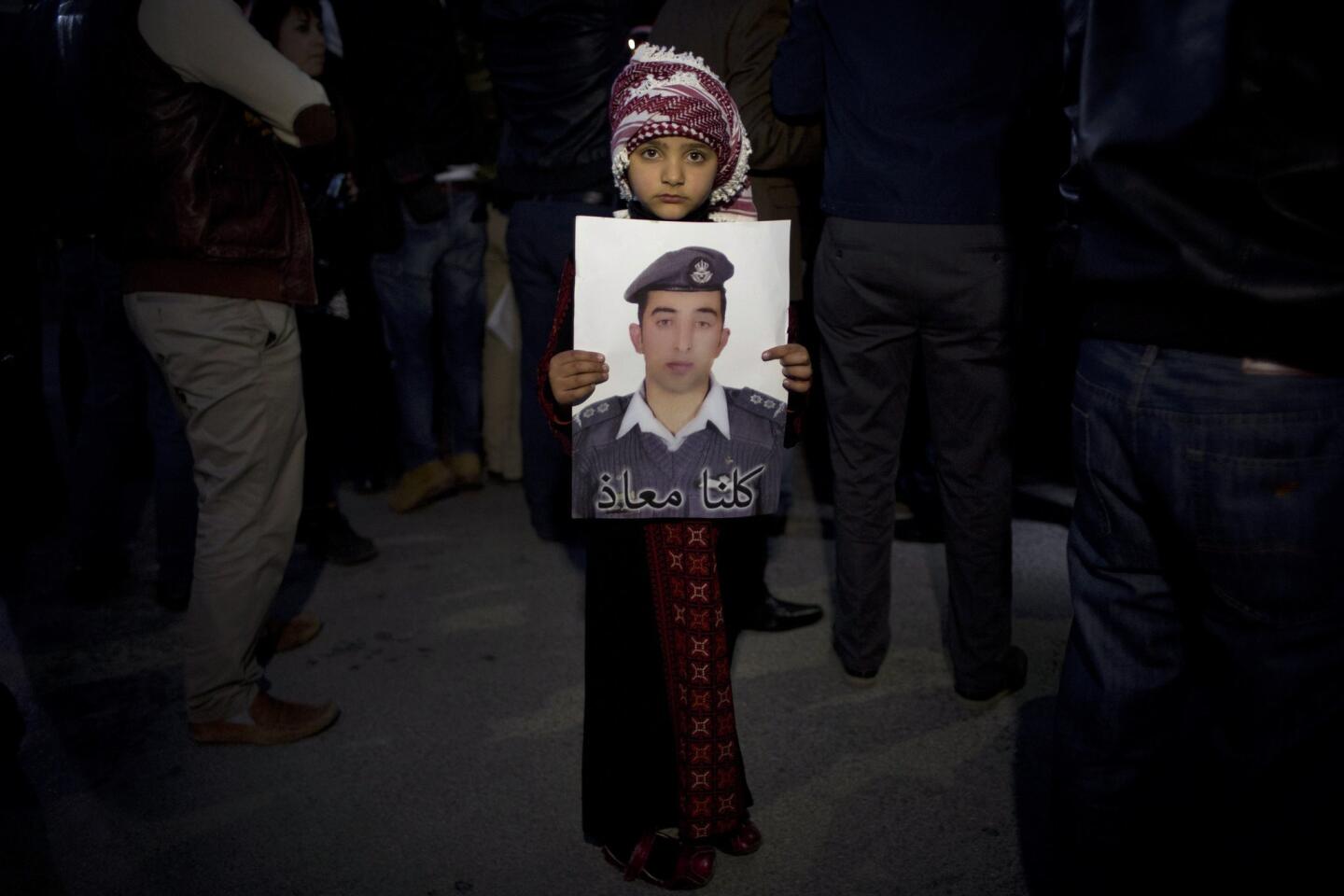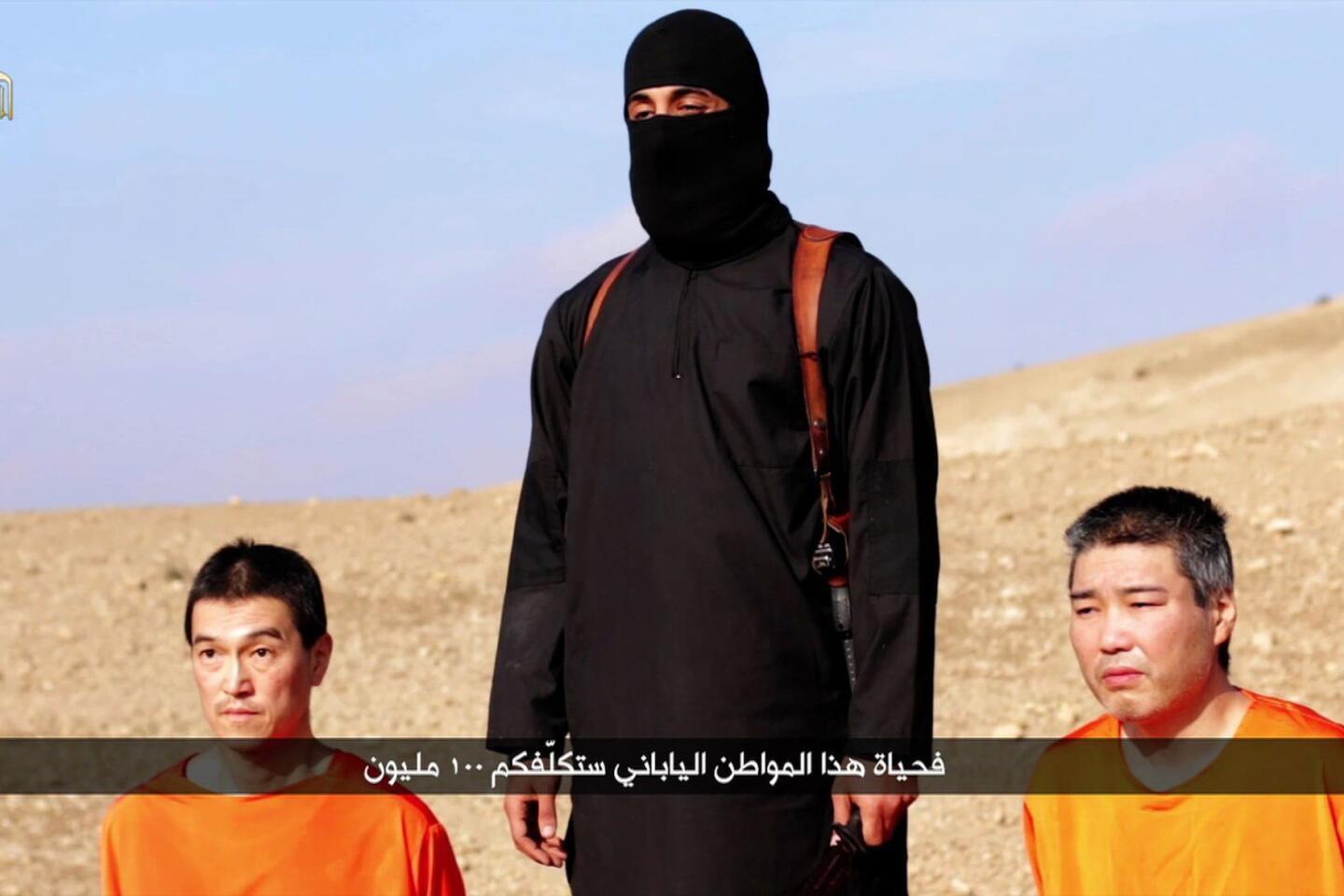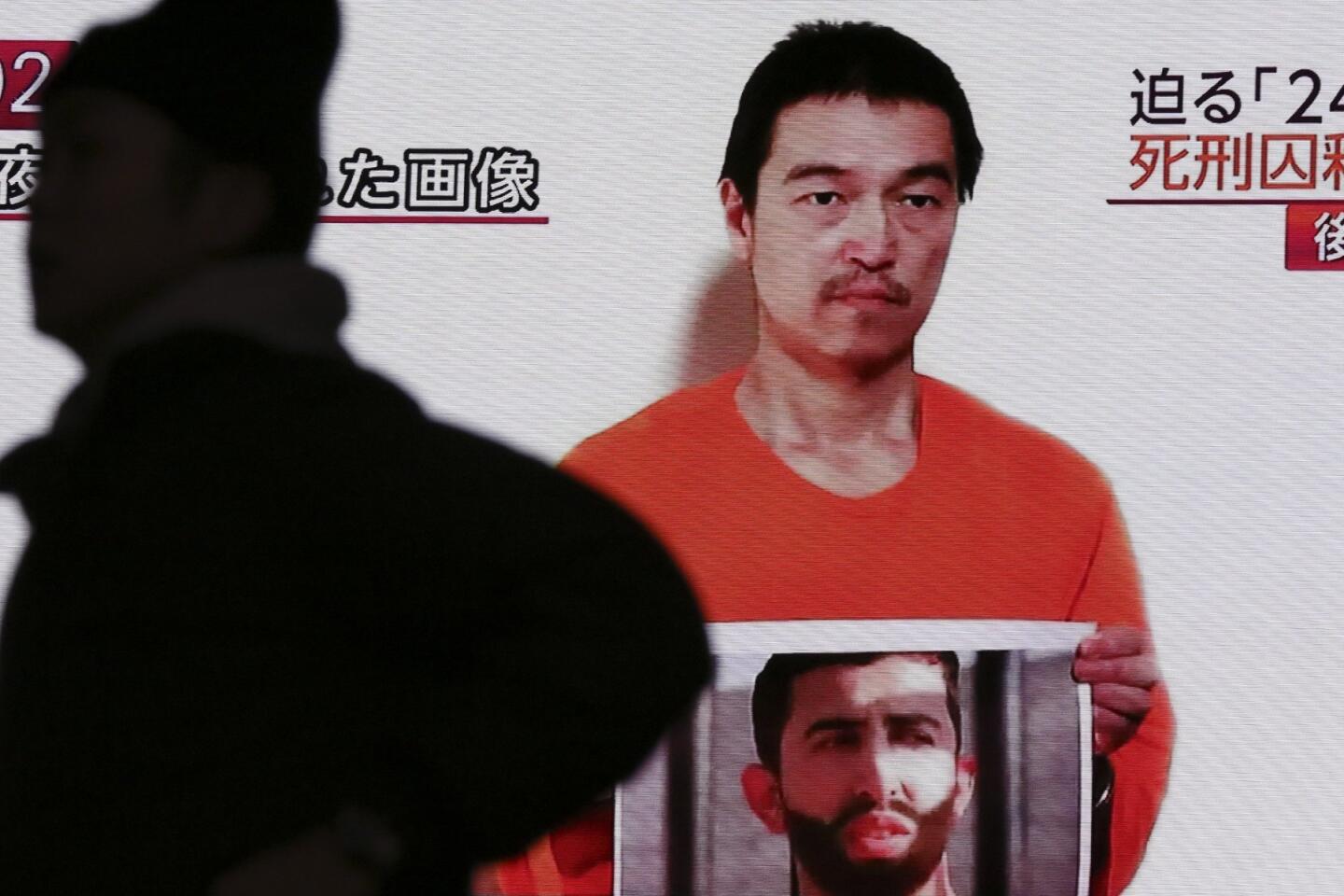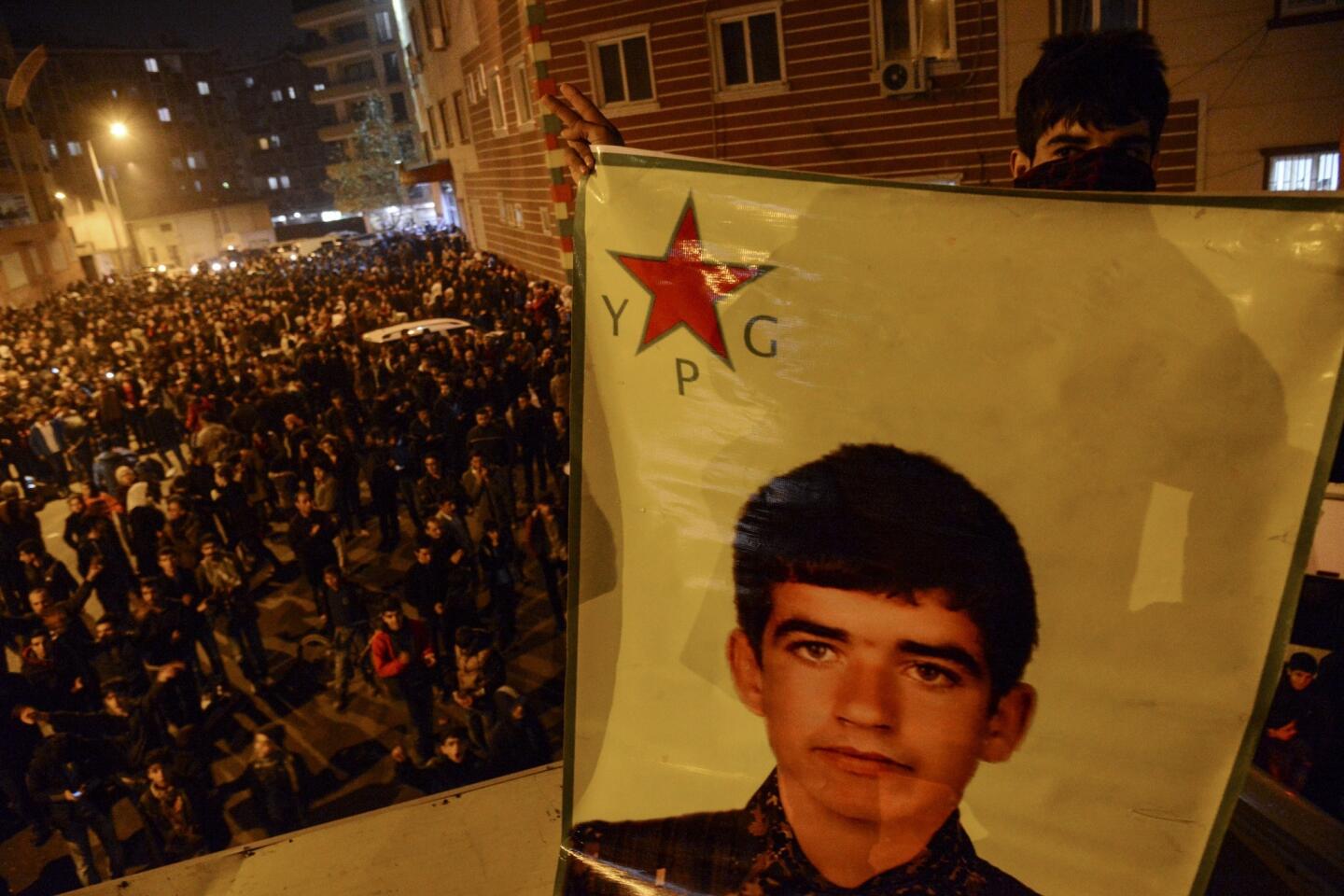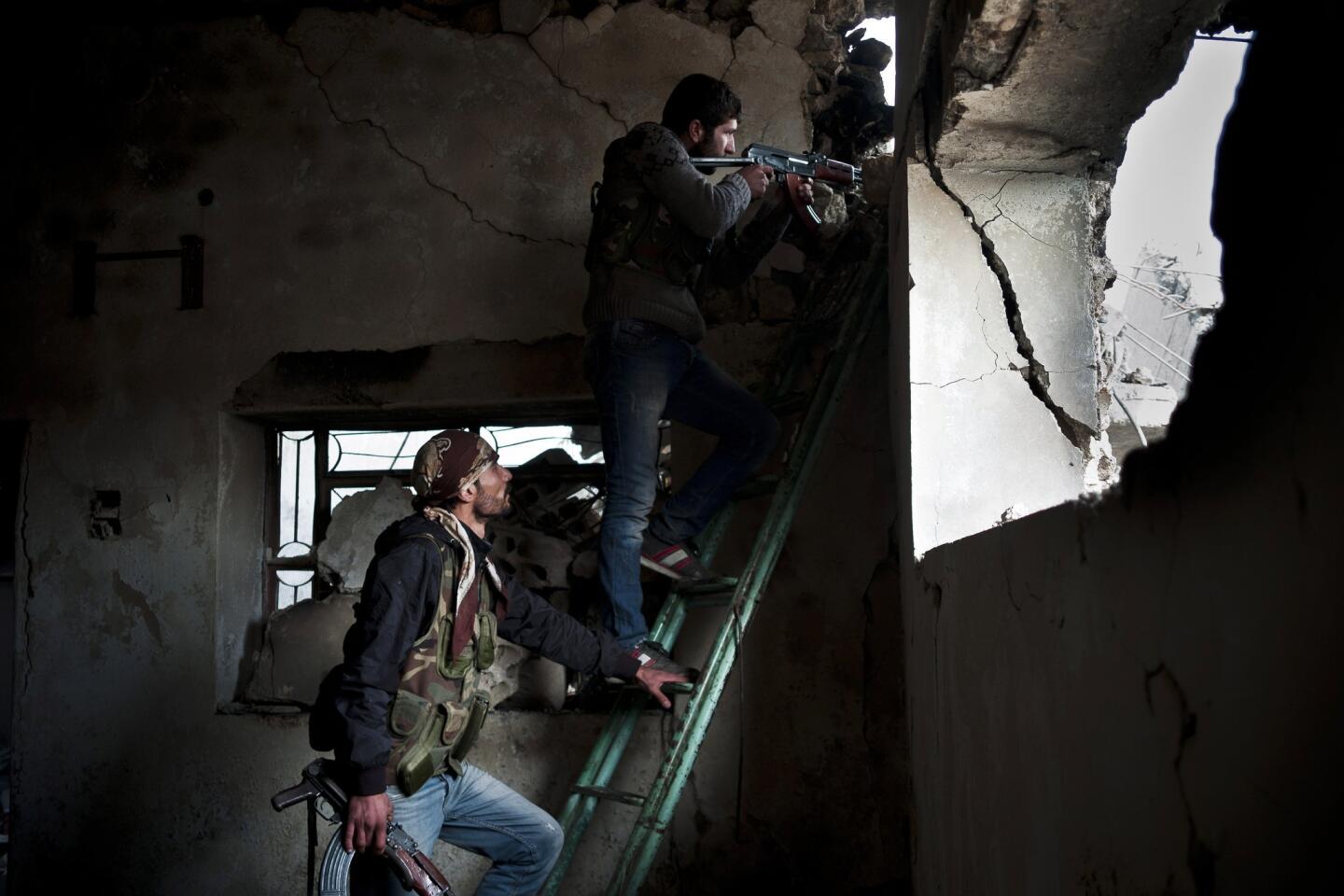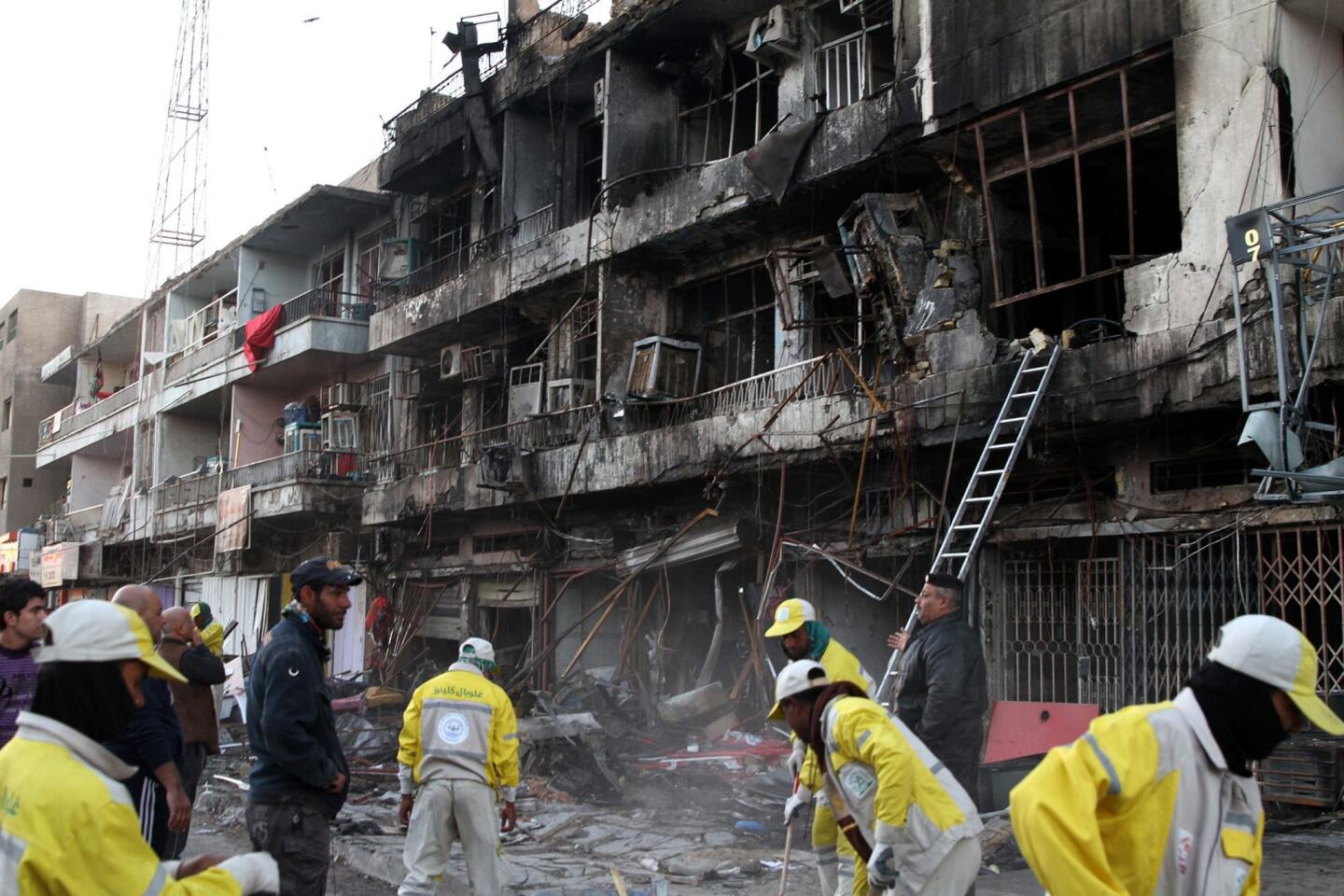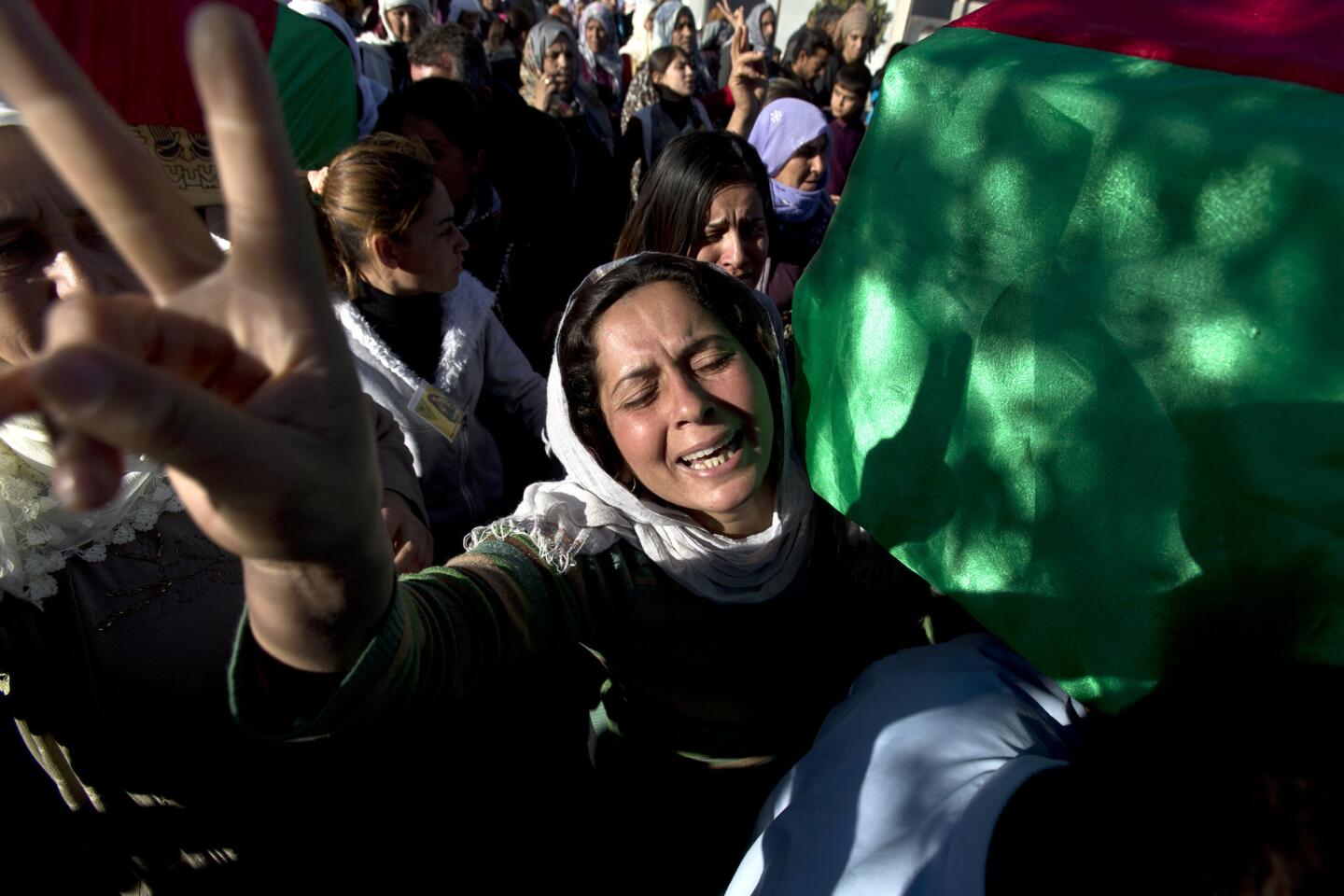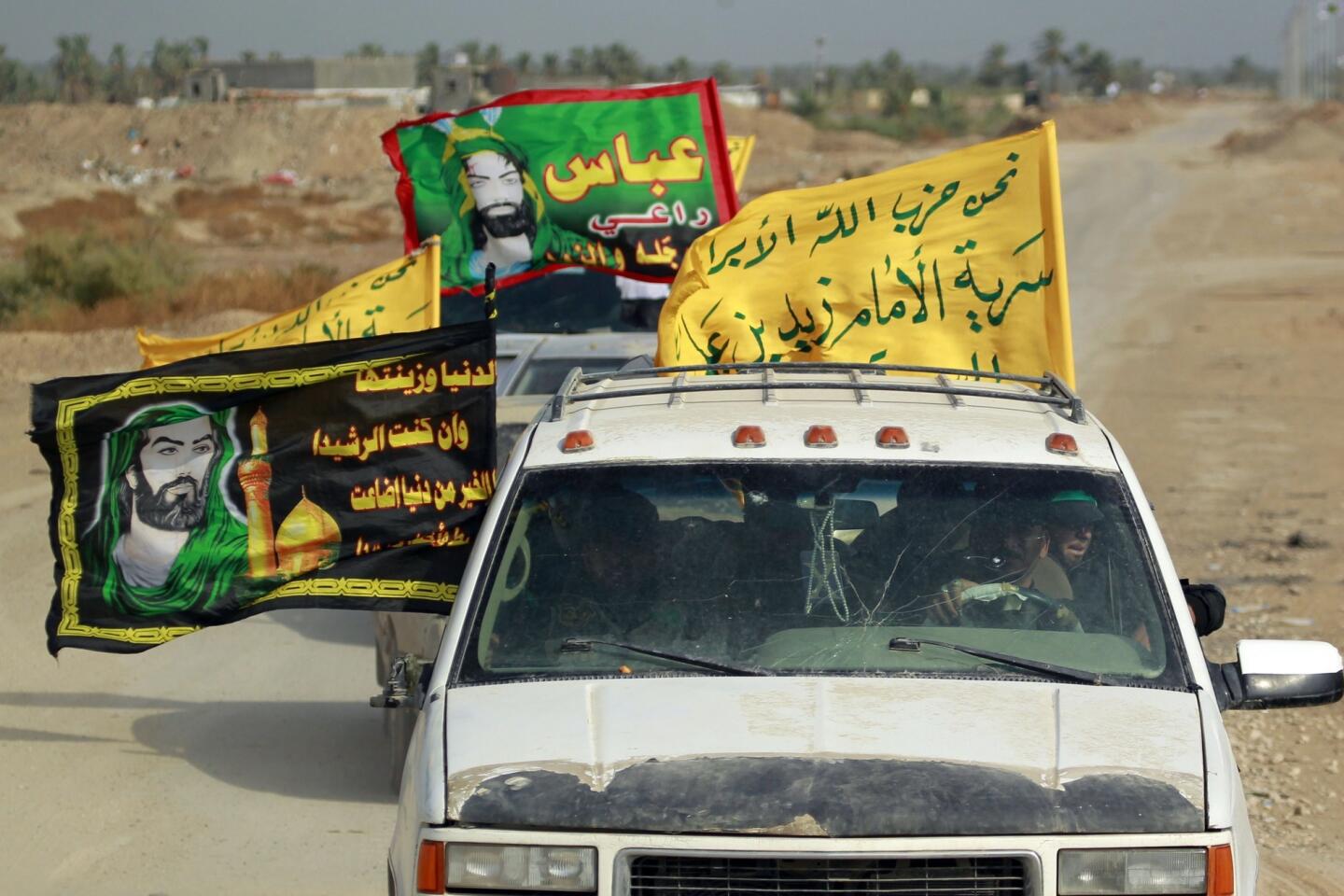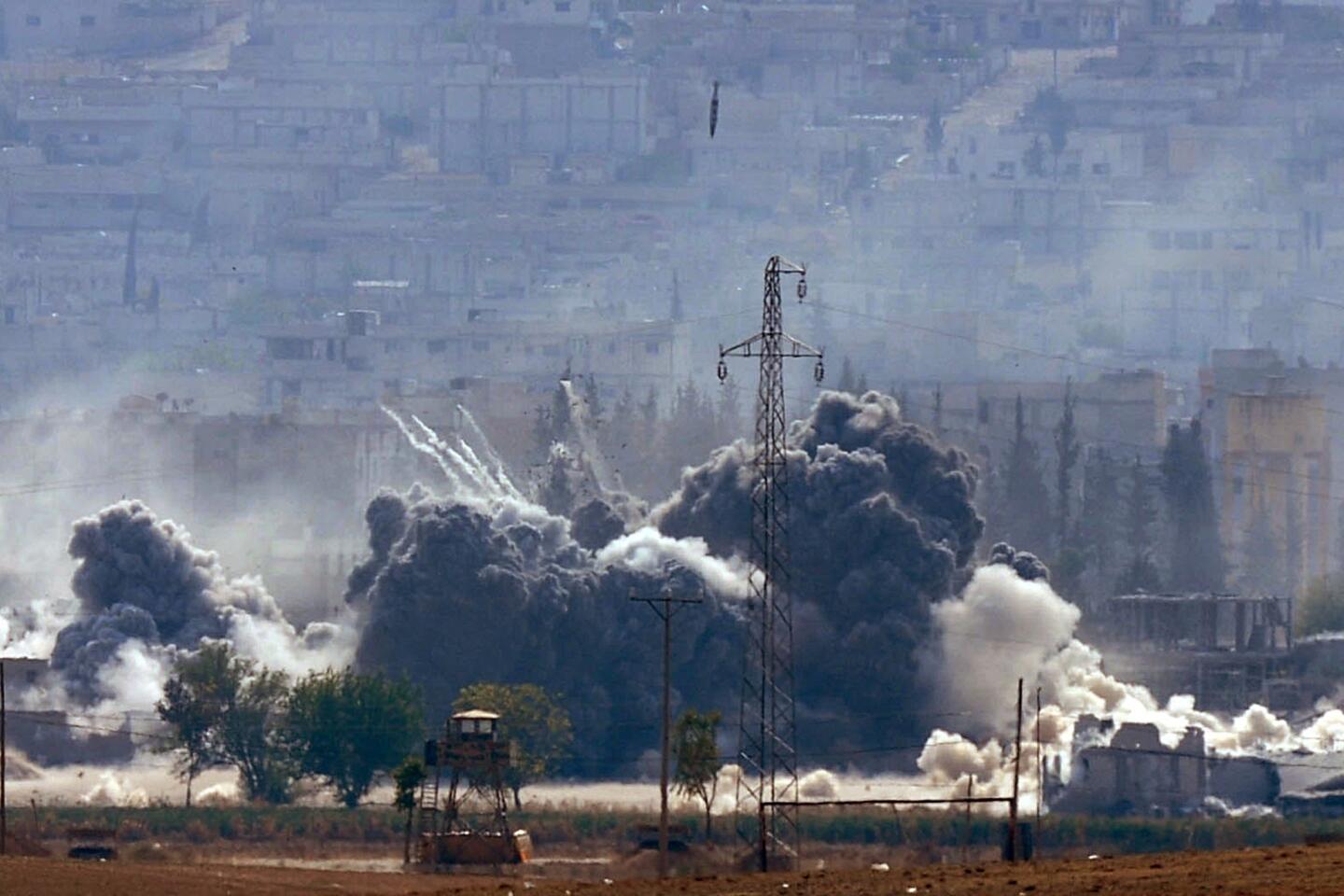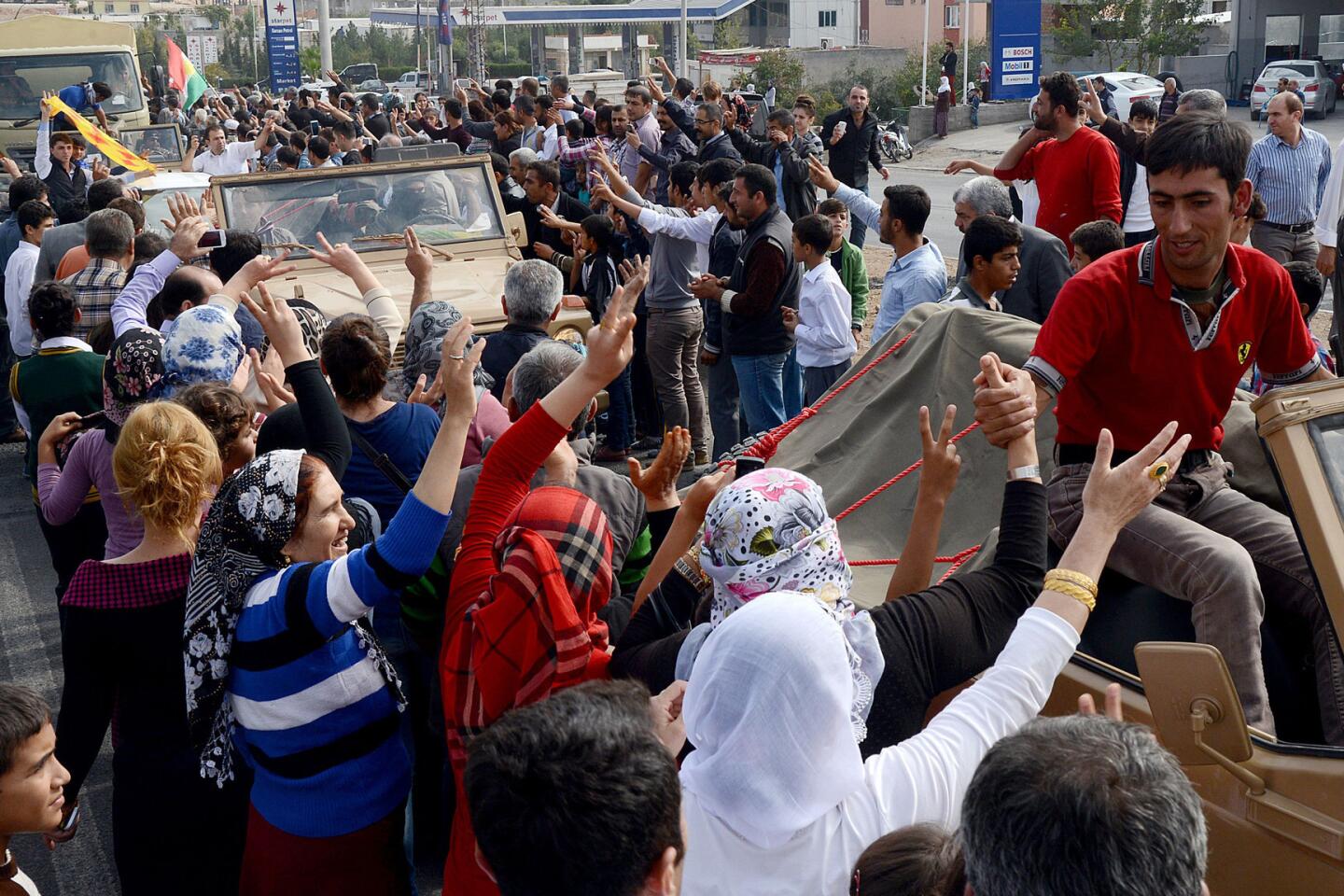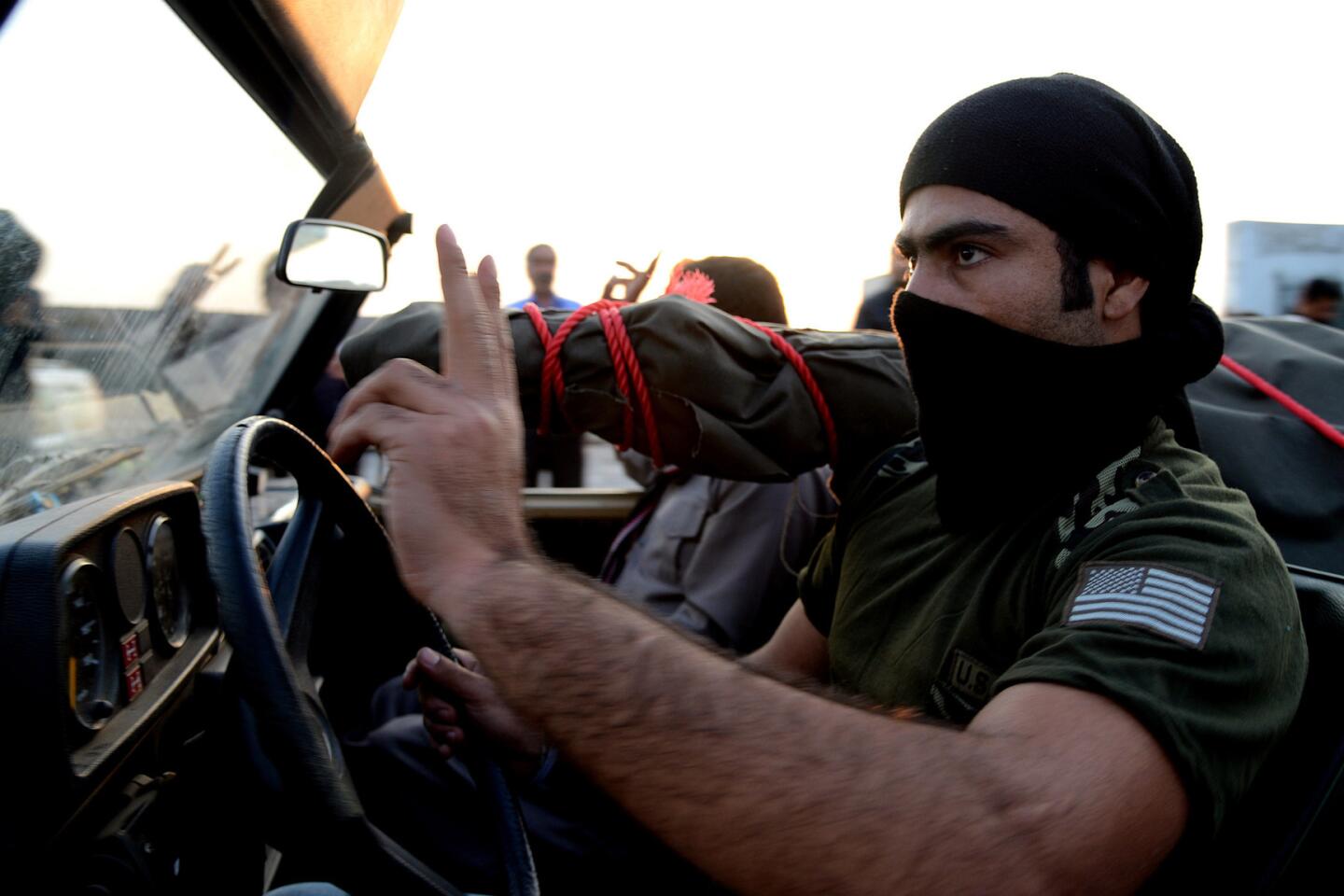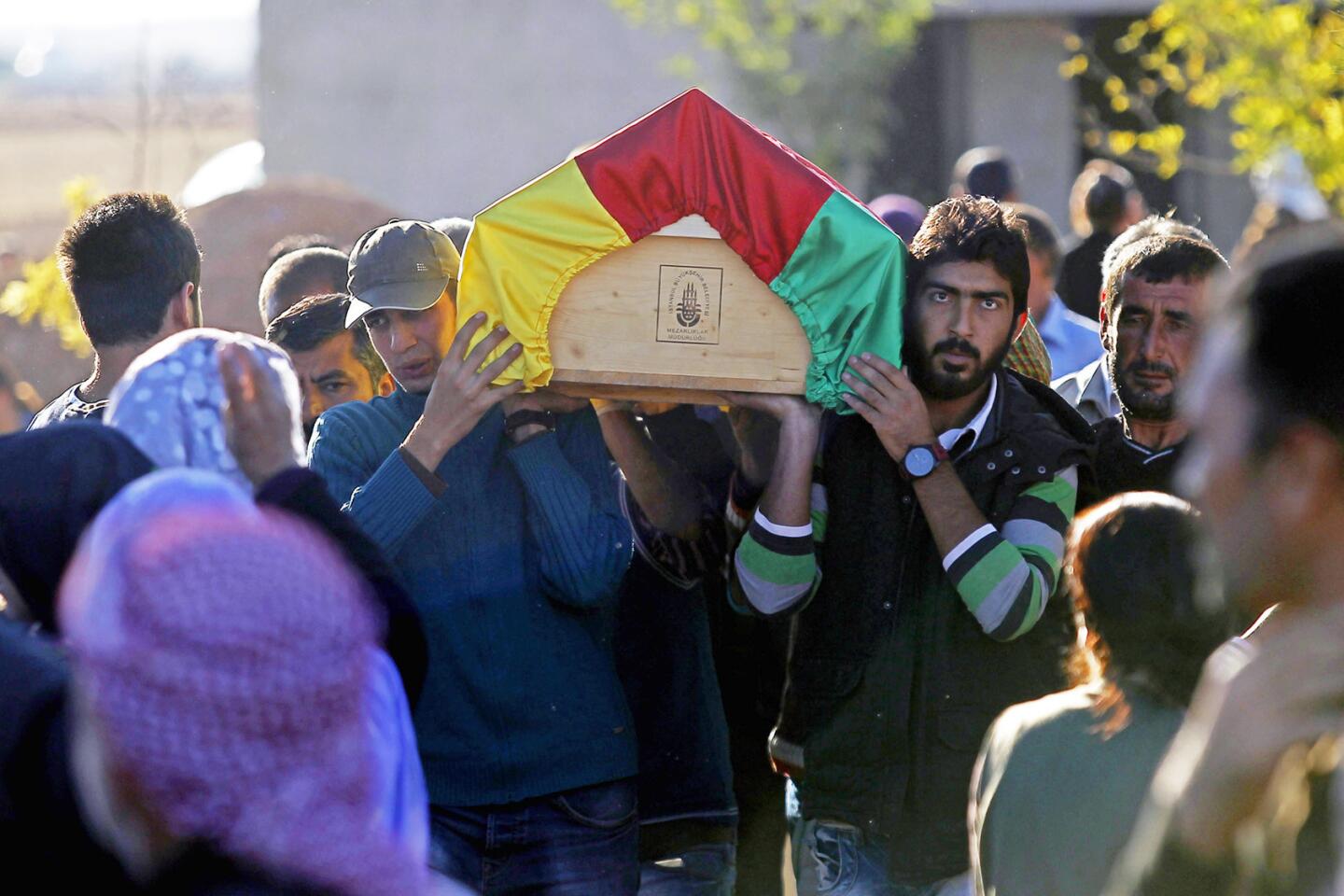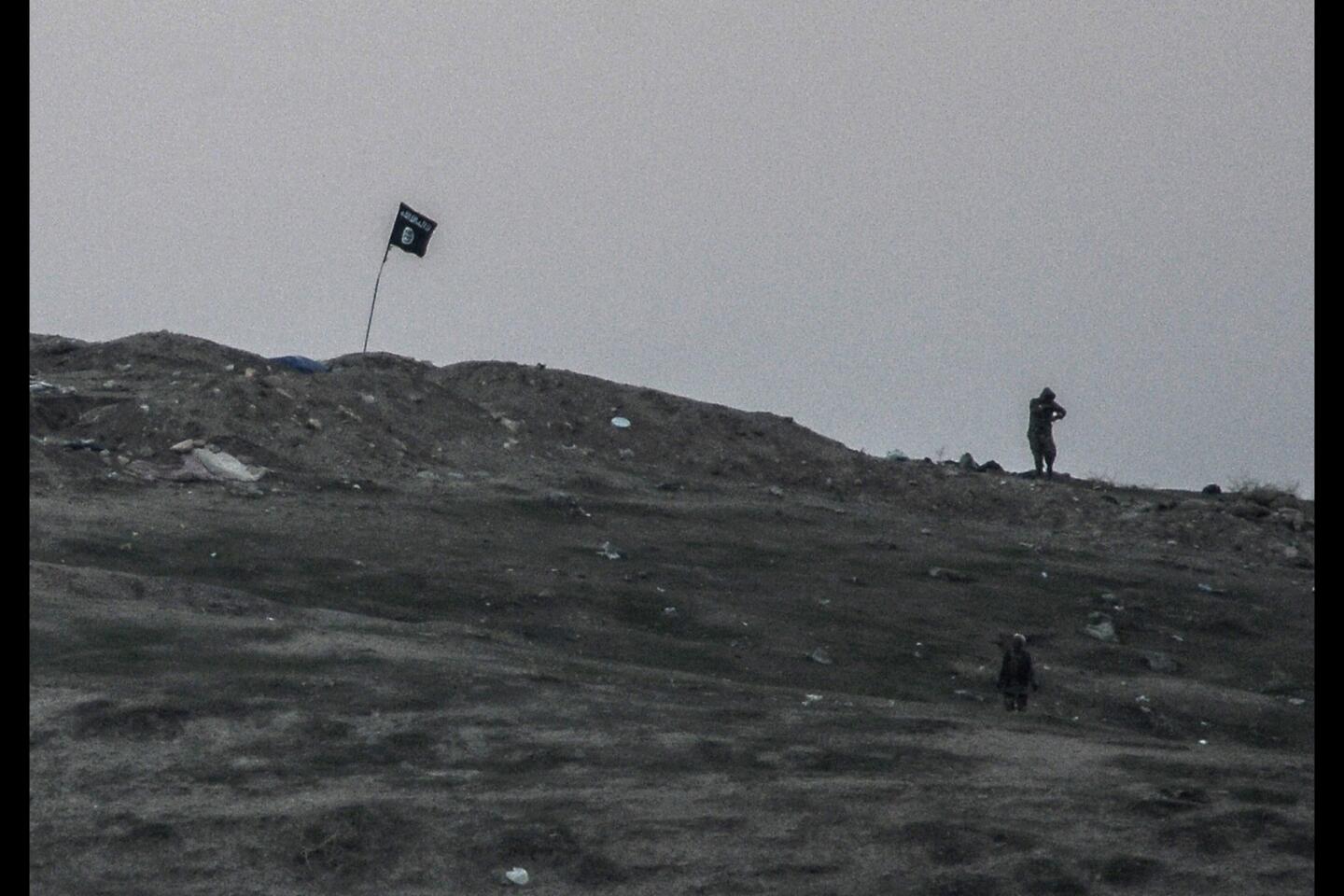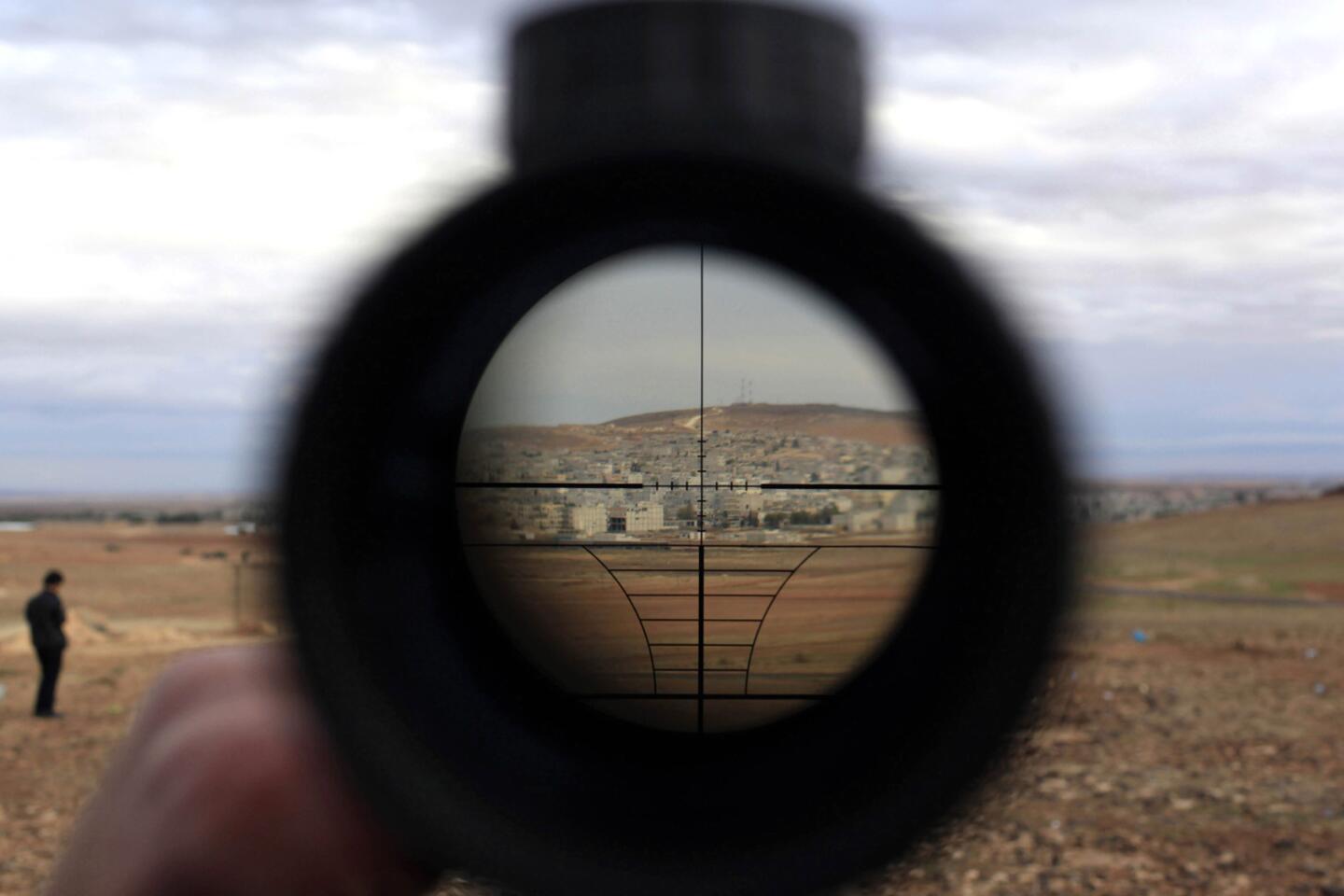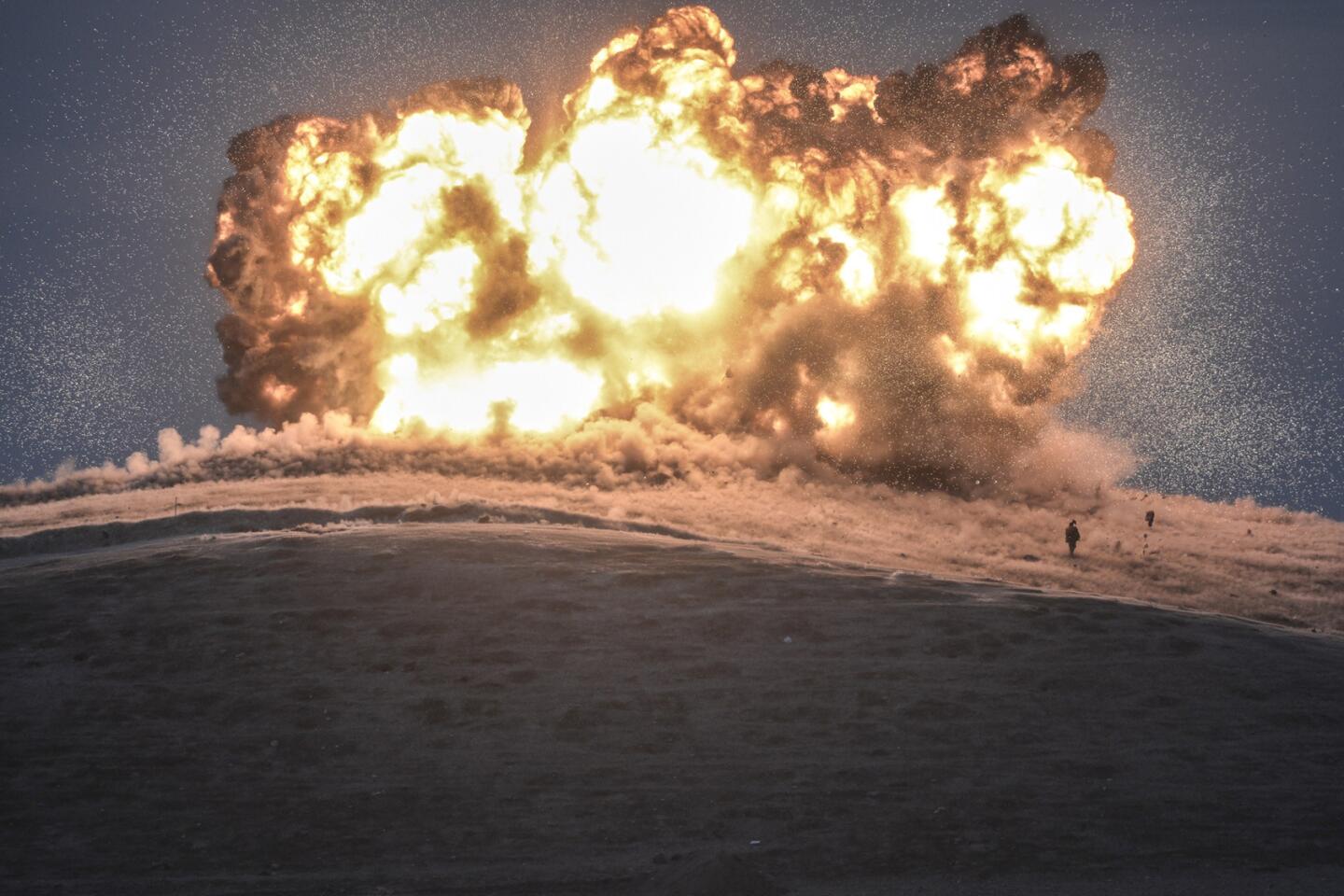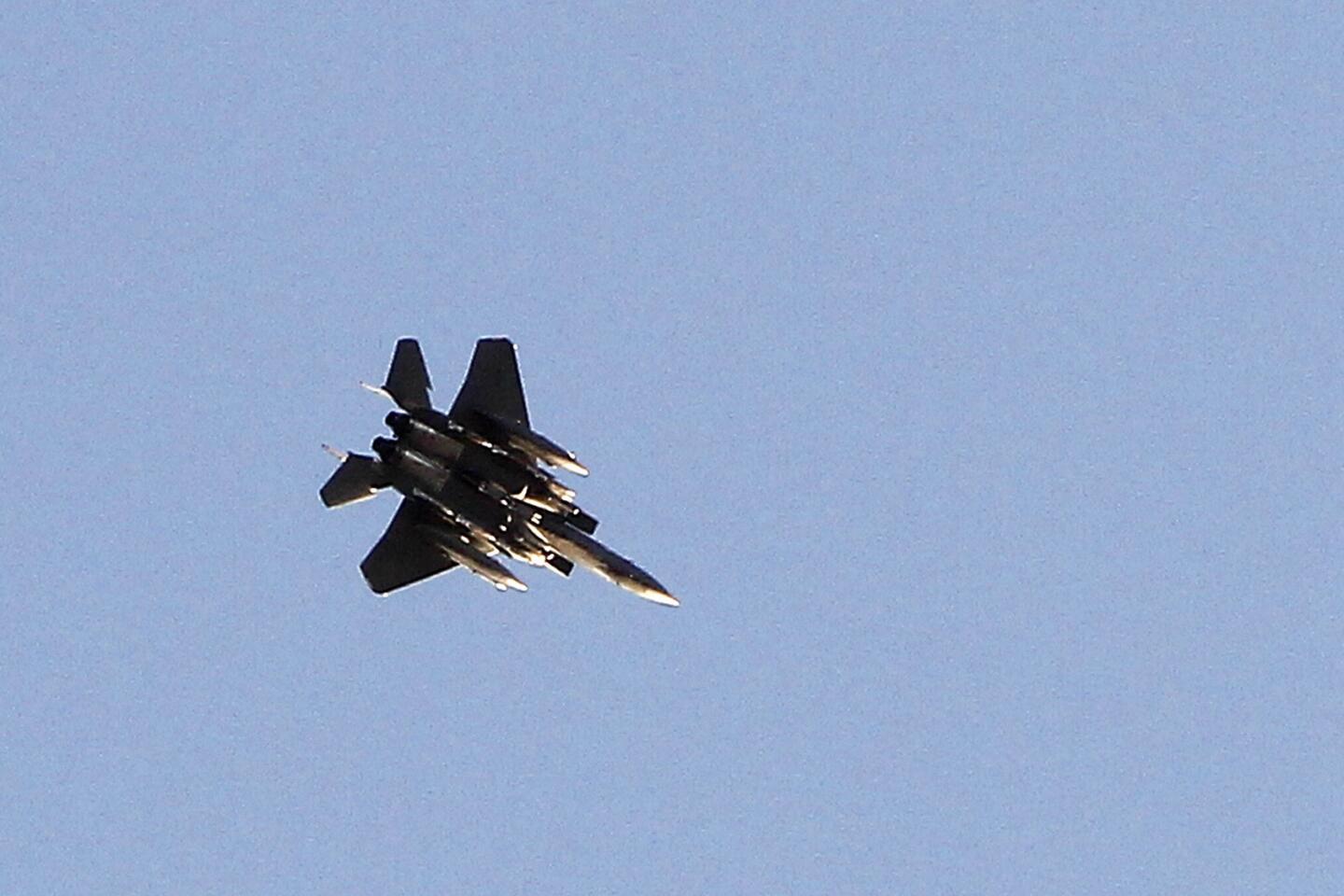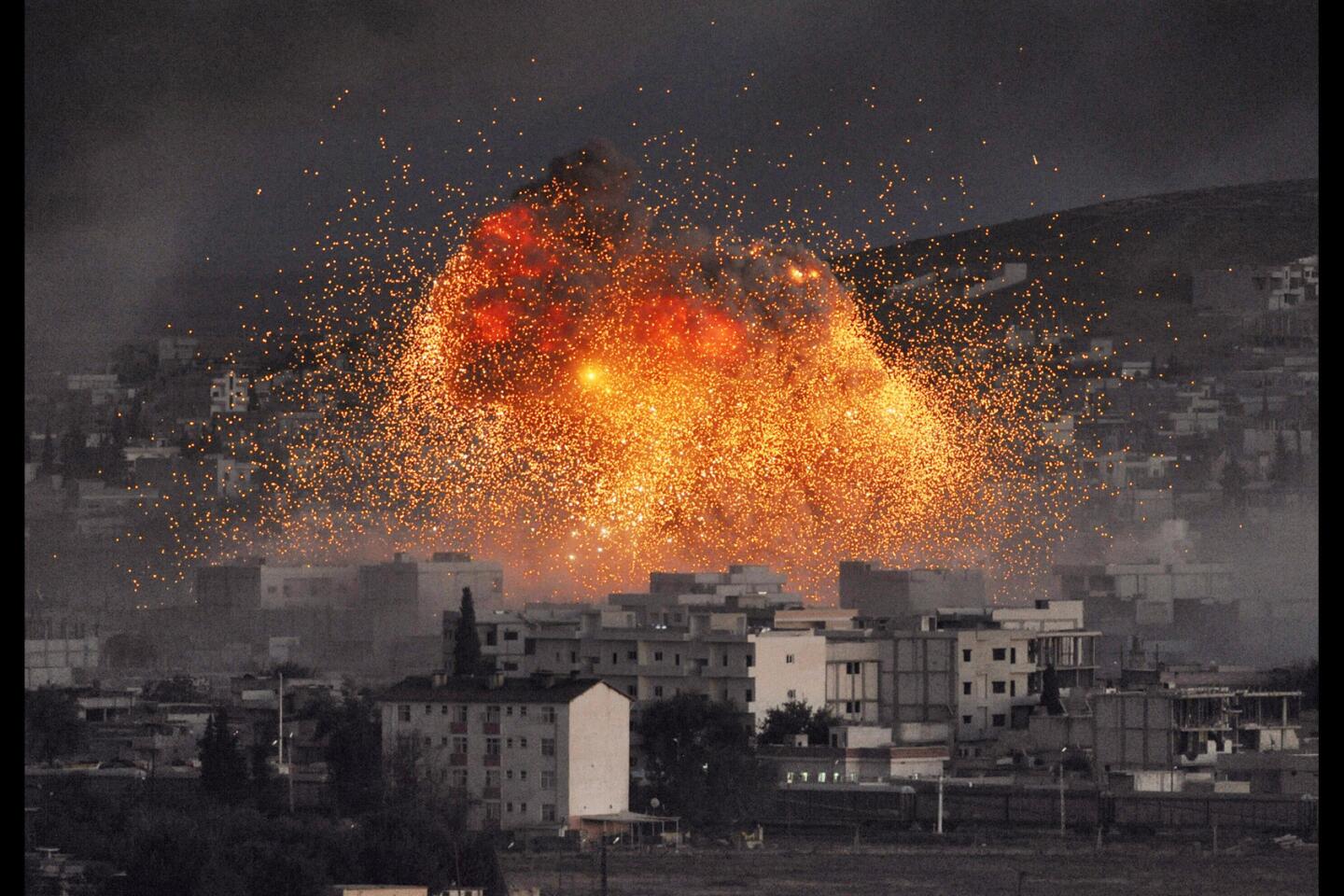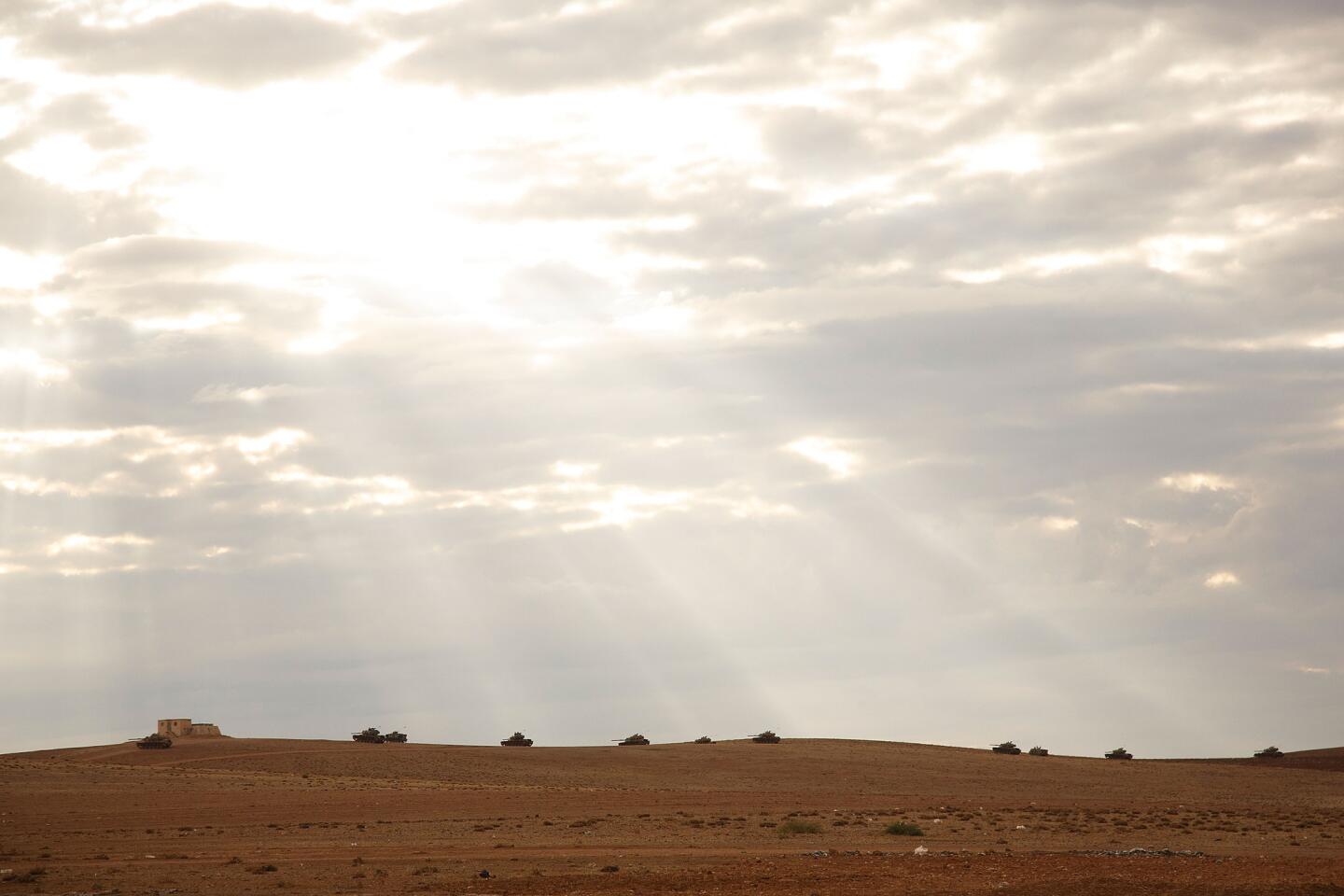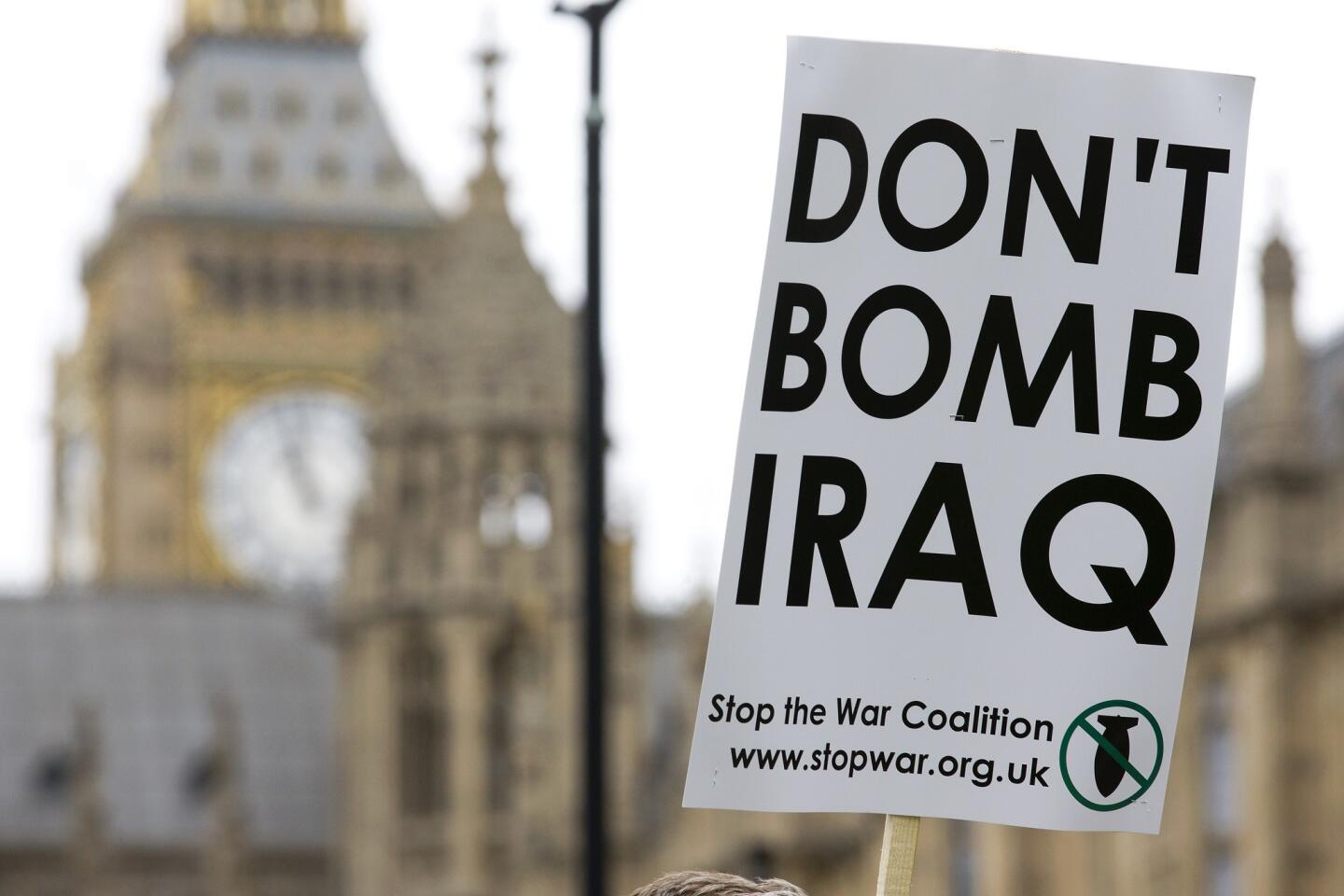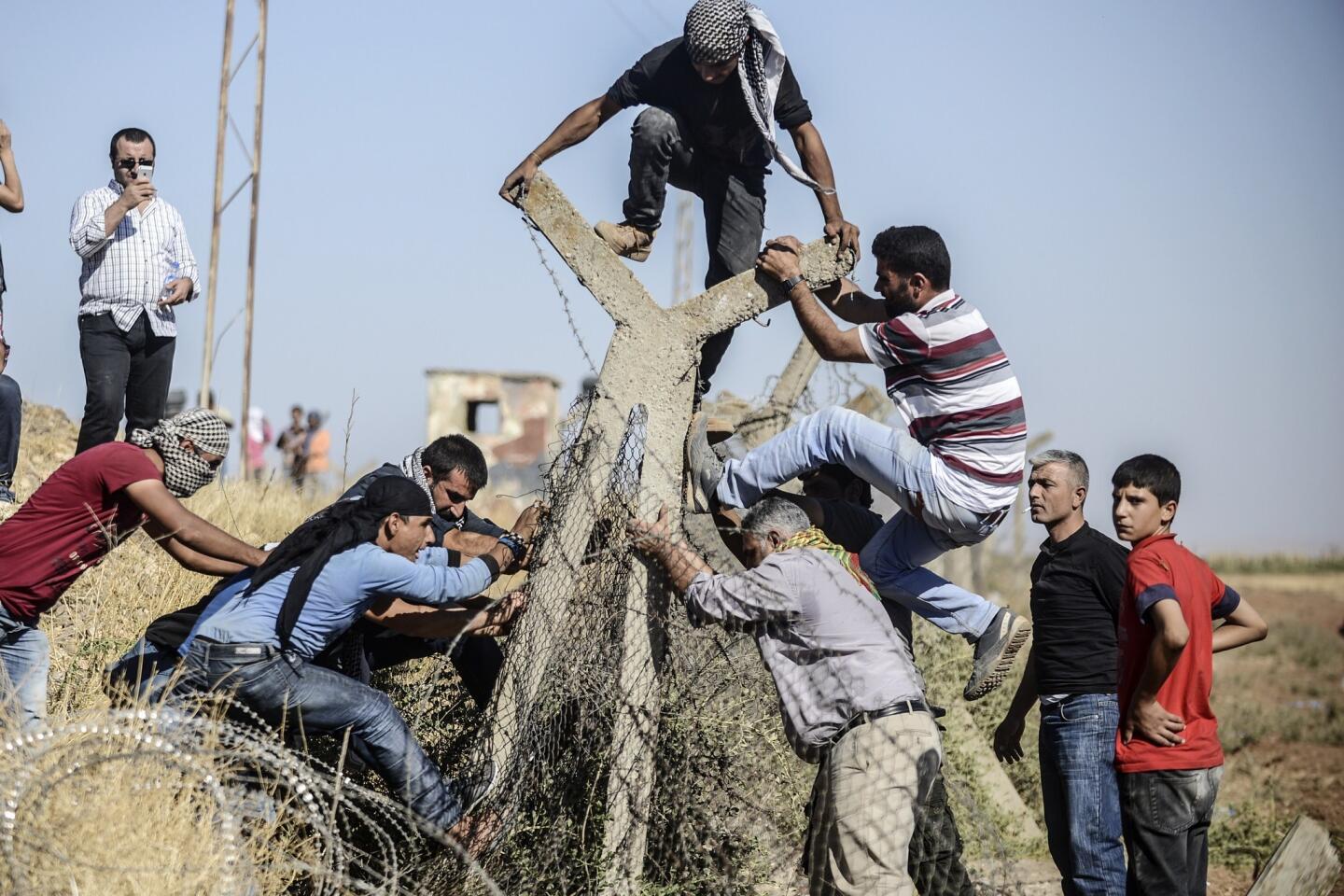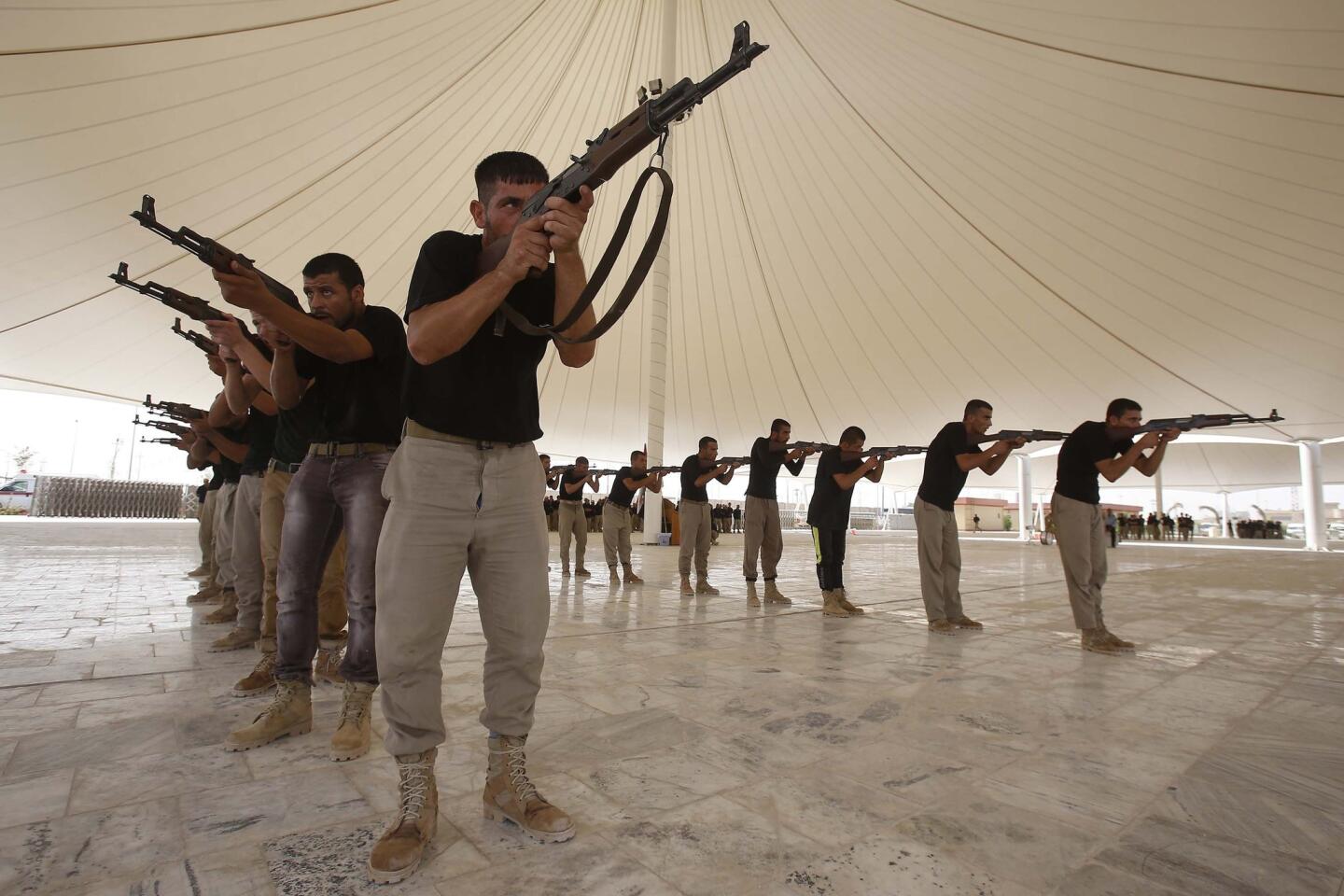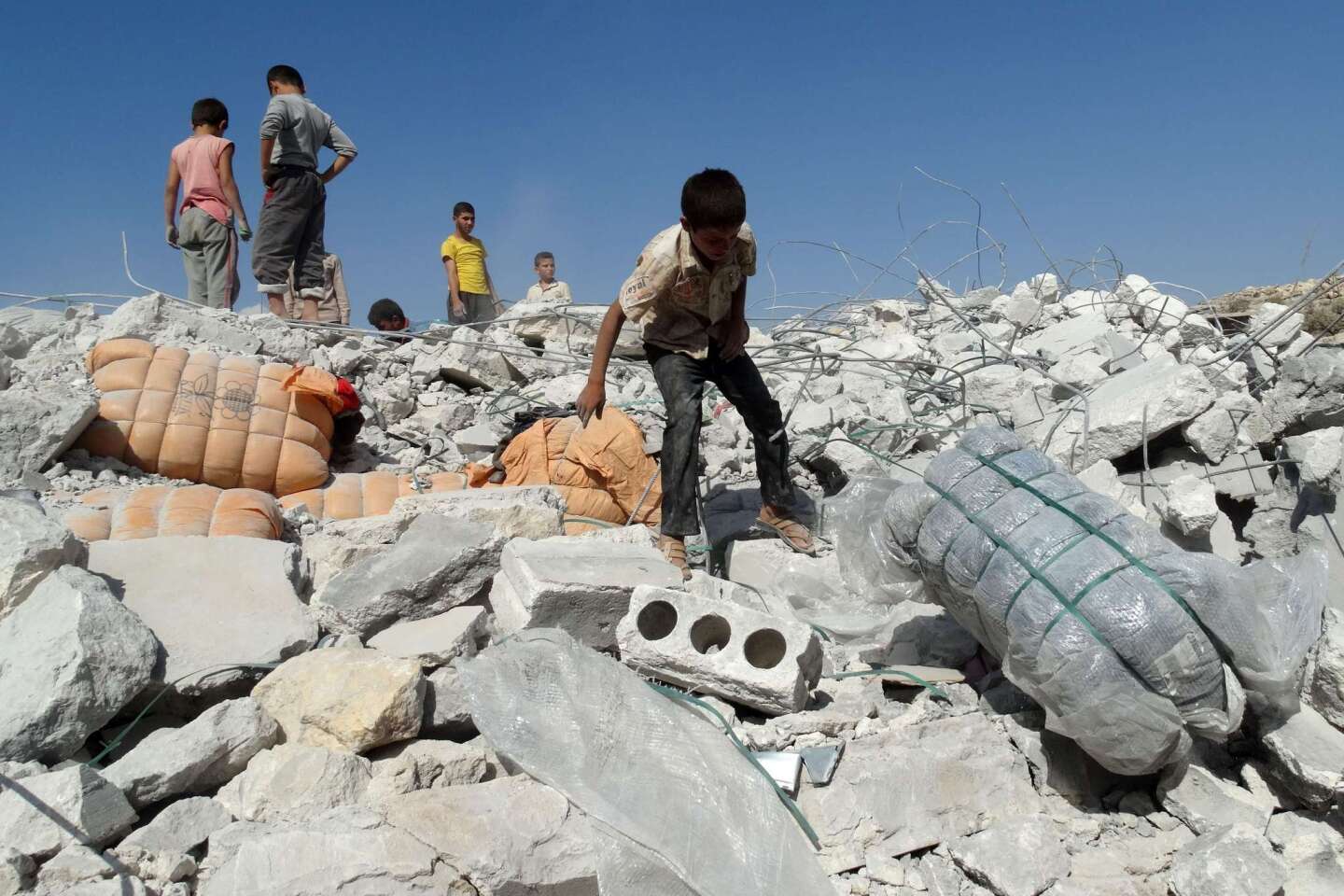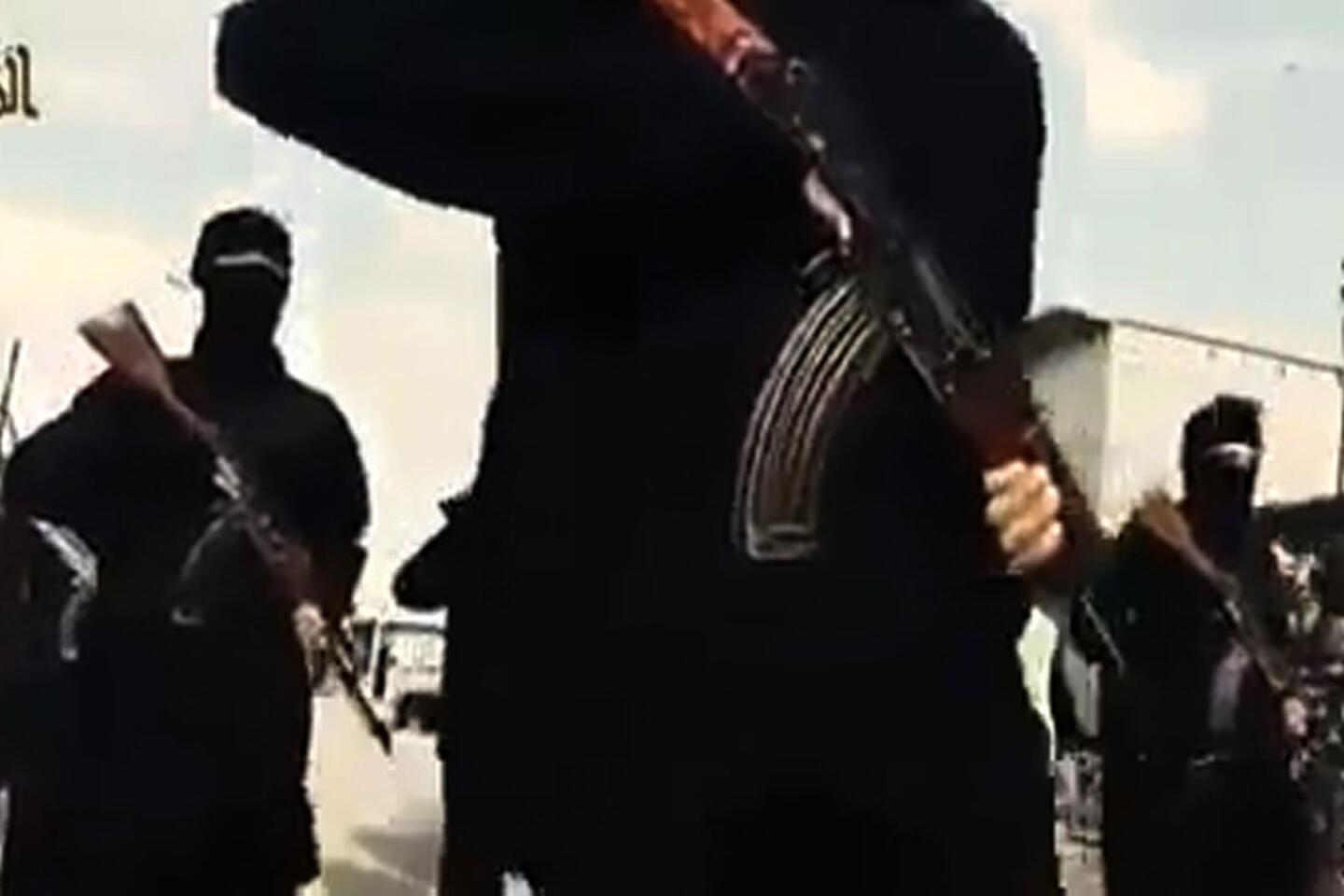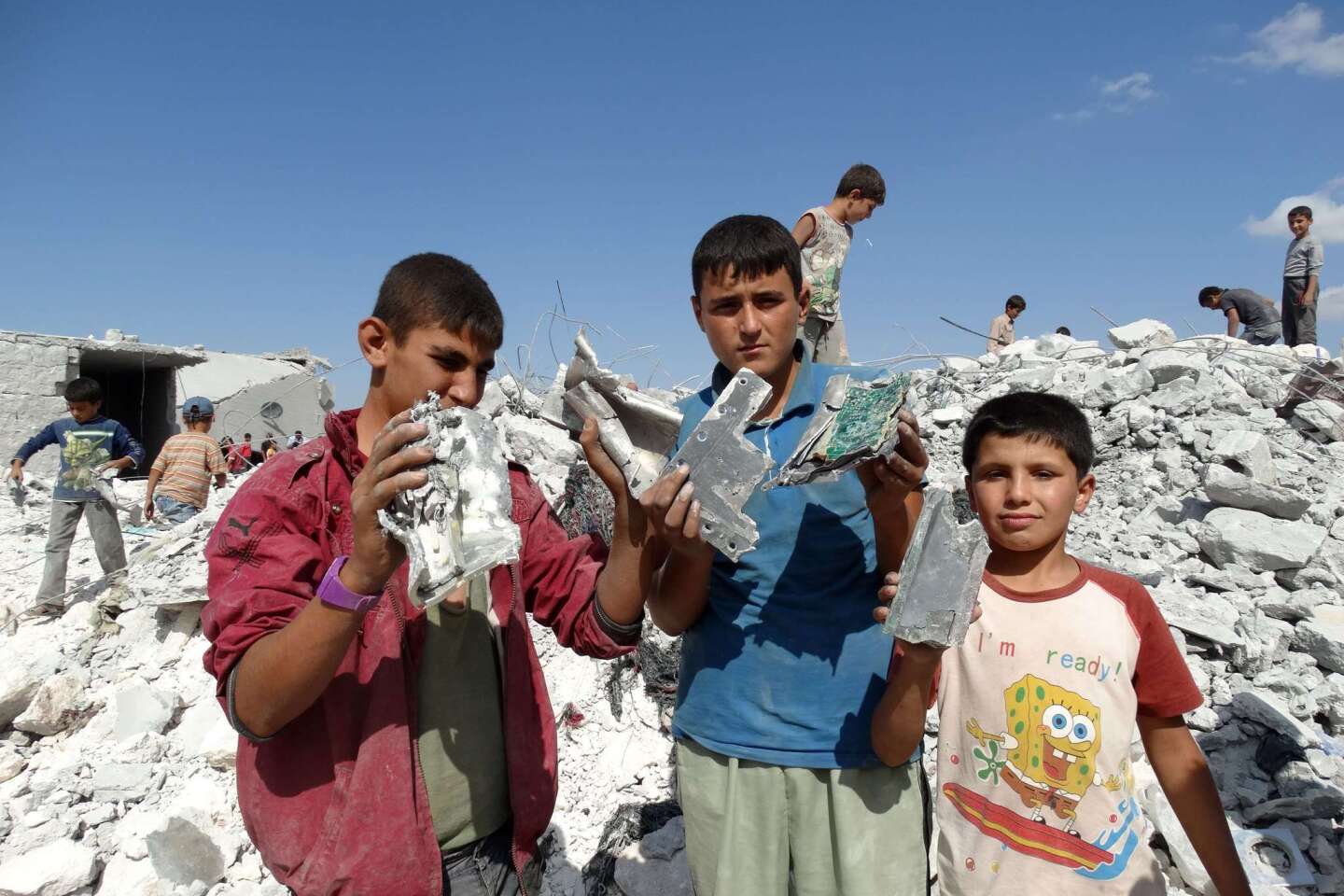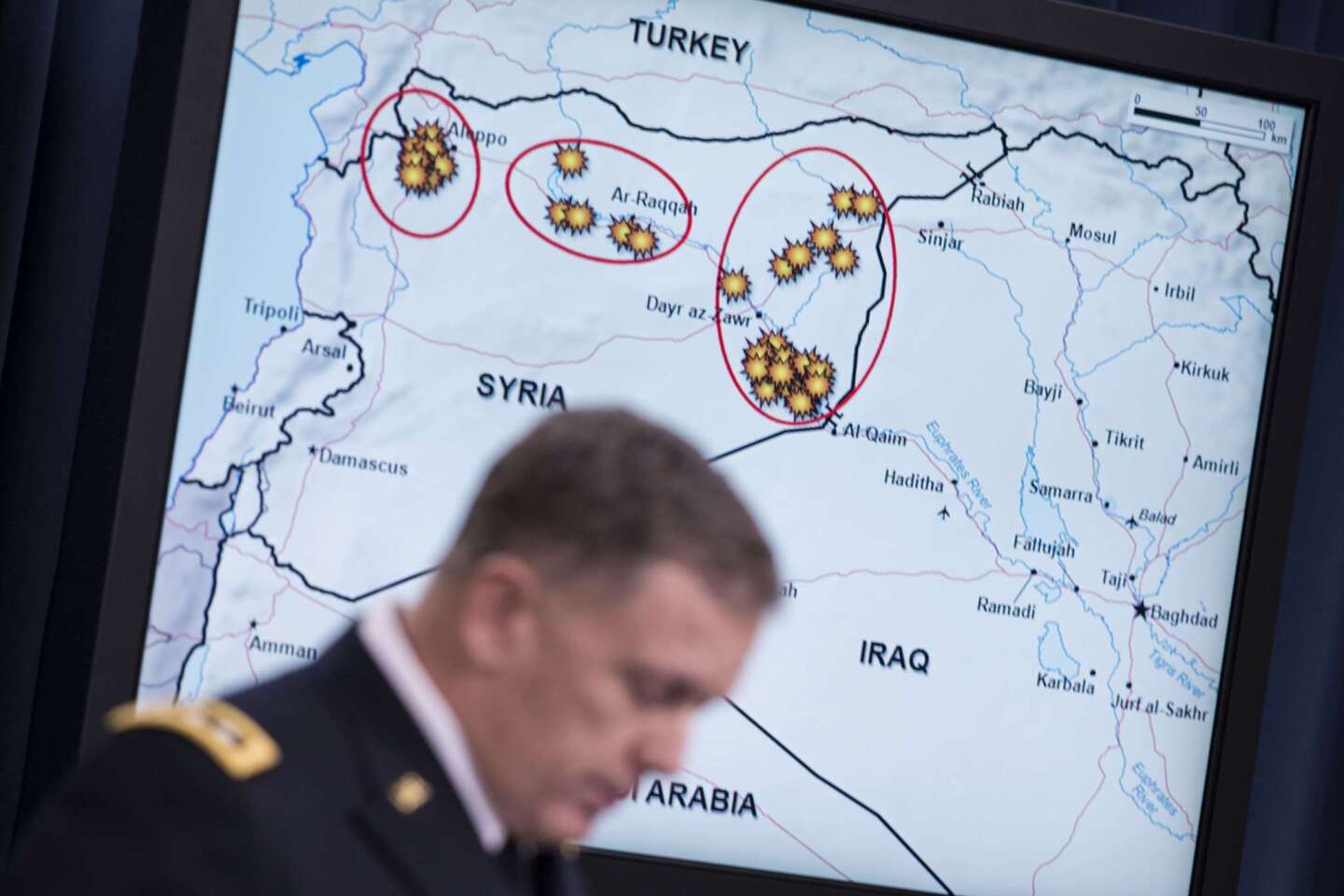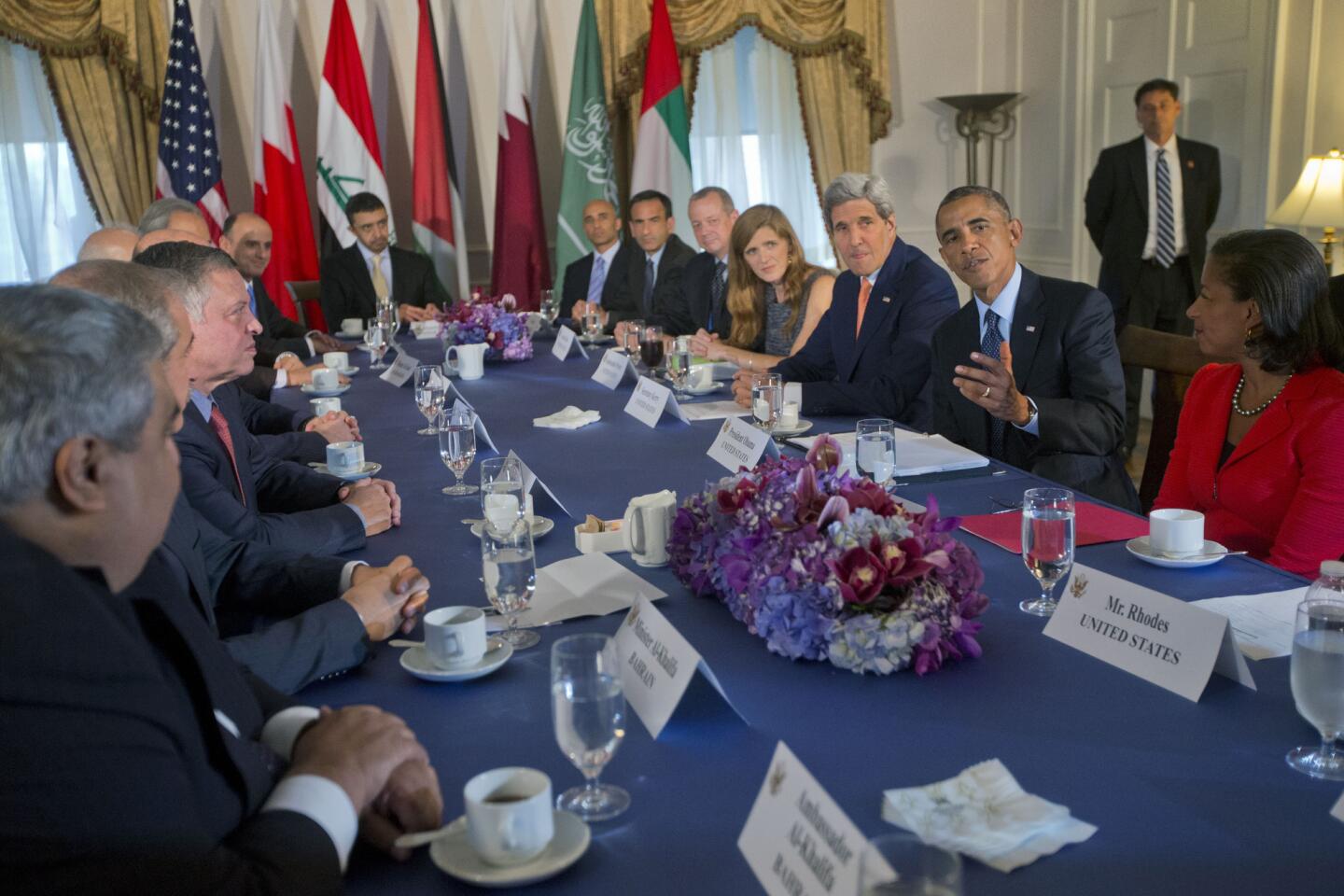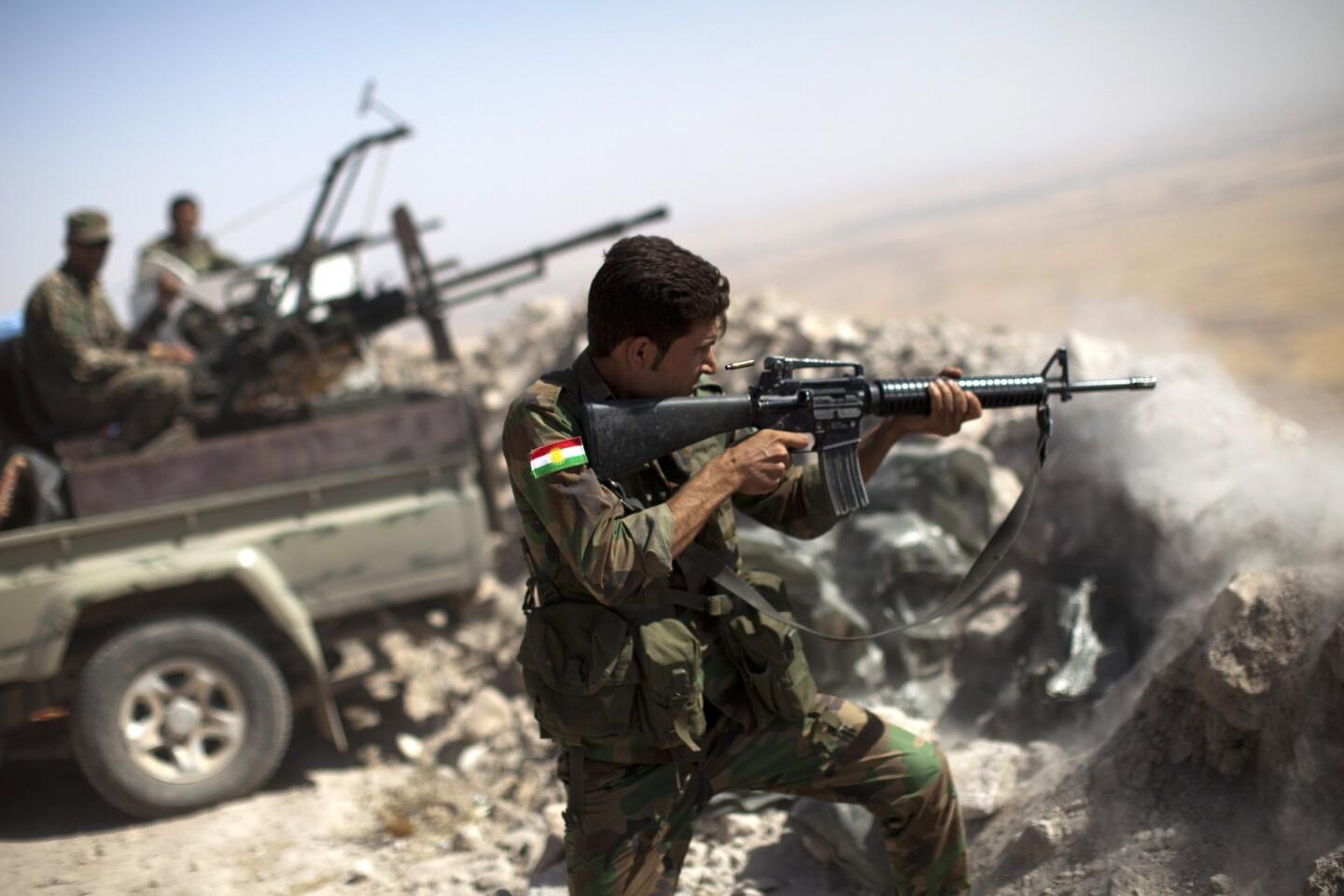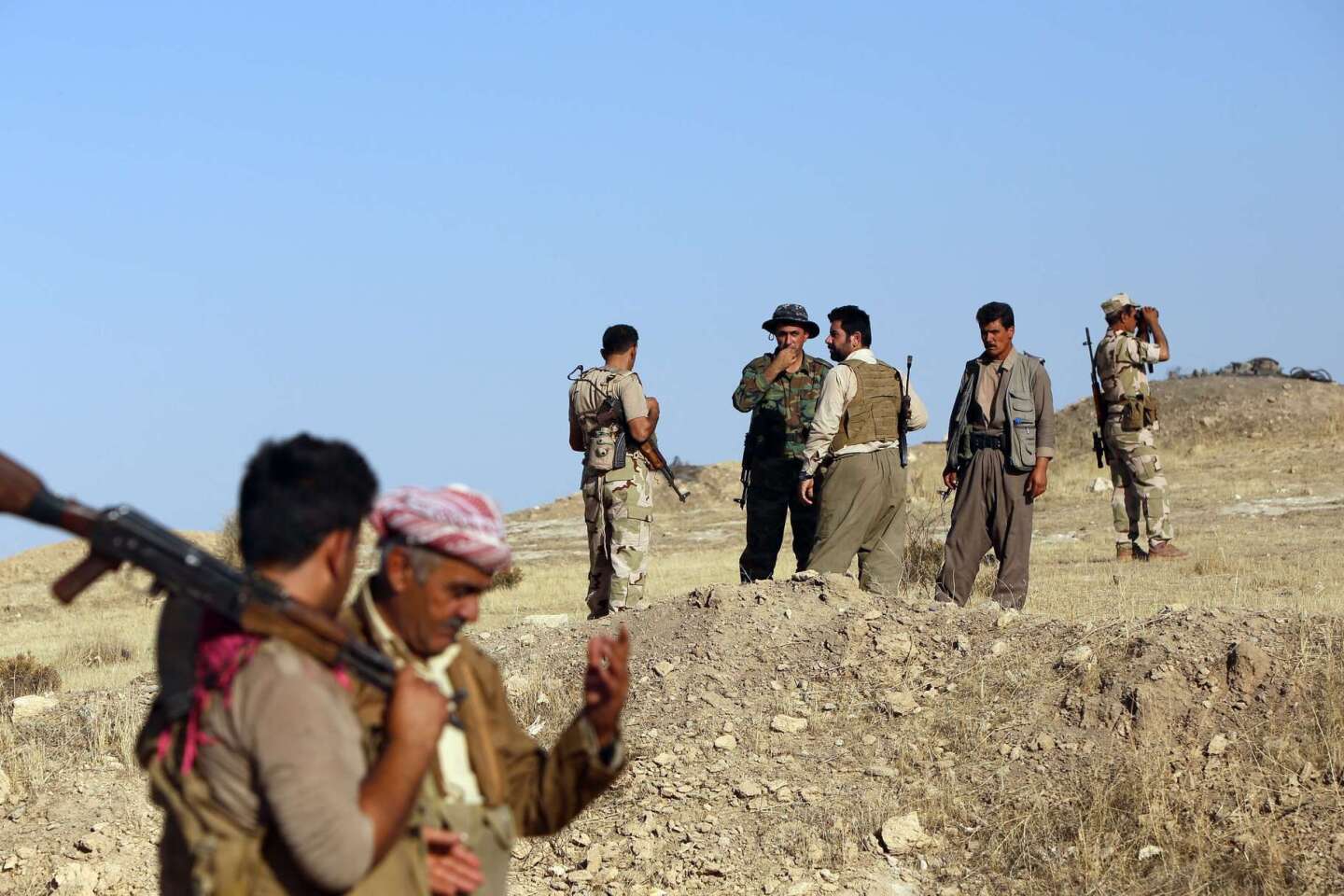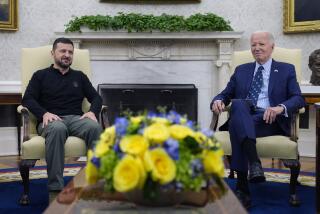Air Force hires civilian drone pilots for combat patrols; critics question legality
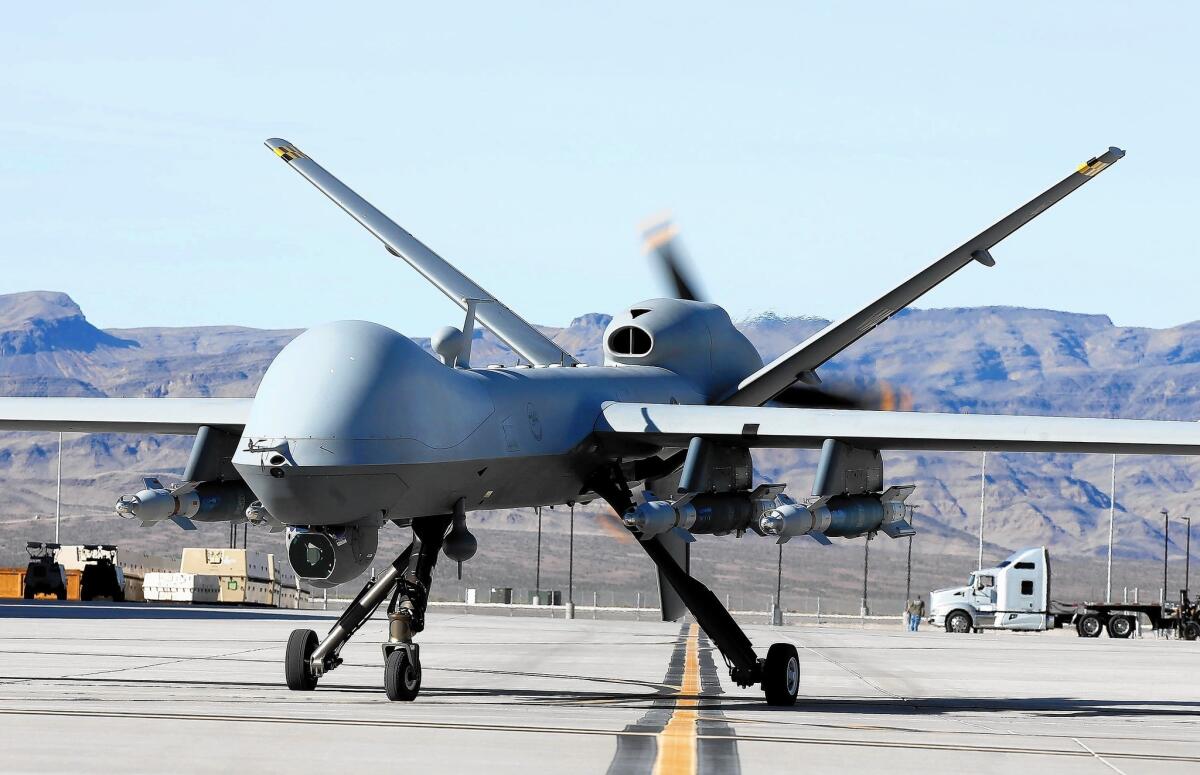
- Share via
Reporting from WASHINGTON — The Air Force has hired civilian defense contractors to fly MQ-9 Reaper drones to help track suspected militants and other targets in global hot spots, a previously undisclosed expansion in the privatization of once-exclusively military functions.
For the first time, civilian pilots and crews now operate what the Air Force calls “combat air patrols,” daily round-the-clock flights above areas of military operations to provide video and collect other sensitive intelligence.
Contractors control two Reaper patrols a day, but the Air Force plans to expand that to 10 a day by 2019. Each patrol involves up to four drones.
NEWSLETTER: Get the day’s top headlines from Times Editor Davan Maharaj >>
Civilians are not allowed to pinpoint targets with lasers or fire missiles. They operate only Reapers that provide intelligence, surveillance and reconnaissance, known as ISR, said Air Force Gen. Herbert “Hawk” Carlisle, head of Air Combat Command.
“There are limitations on it,” he said. The contractors “are not combatants.”
Nonetheless, the contracts have generated controversy within the military.
Critics, including some military lawyers, contend that civilians are now part of what the Air Force calls the “kill chain,” a process that starts with surveillance and ends with a missile launch. That could violate laws barring civilians from taking part in armed conflict.
The use of contractors reflects in part the Pentagon’s growing problem in recruiting, training and retaining military drone pilots for the intensifying air war against Islamic State militants in Iraq and Syria. It is several hundred short of its goal of 1,281 pilots.
The contractors are Aviation Unmanned, a small, 3-year-old company based in Addison, Texas, and General Atomics Aeronautical Systems Inc., a far-larger firm based in Poway, outside San Diego, that is the only supplier of armed drones to the Pentagon.
A redacted Air Force document approving the classified contract with Aviation Unmanned notes that the “lack of appropriately cleared and currently qualified MQ-9 pilots is a major concern.”
The five-page document, dated Aug. 24, says the company will provide pilots and sensor operators for government-owned Reapers to help respond to “recent increased terrorist activities.”
A similar document, dated April 15, approved a classified contract to lease a General Atomics-owned Reaper and ground control station for a year and to hire the pilots, sensor operators and other crew members needed to fly and maintain it.
The Reaper “is needed immediately” for surveillance and reconnaissance, the document states.
Both documents black out the cost, as well as most details of the missions and sensors involved.
The Reaper is a larger, heavier and more powerful version of the better-known Predator. Both are made by General Atomics.
The Pentagon requires the Air Force to fly 60 combat air patrols with Predators and Reapers each day. They plan to ramp up to 90 patrols a day by 2019.
Most are controlled from ground stations at Creech Air Force Base, near Las Vegas, command hub for Pentagon drone operations in Syria, Iraq, Afghanistan, Libya, Somalia, Yemen and elsewhere around the globe.
An Air Force spokesman denied that the use of contractor pilots blurs traditional lines of military responsibility in a combat zone.
“Planning and execution of these missions will be carried out under the same oversight currently provided for military aircrews, and the resulting sensor information will be collected, analyzed, transmitted and stored as appropriate by the same military intelligence units,” the spokesman, Benjamin Newell, wrote in an email.
General Atomics employees also provide logistics support, software maintenance, flight operations support, aircraft repair, ground control and other work on most Air Force drones. The company was paid more than $700 million over the last two years for those services, according to Air Force records.
A General Atomics spokeswoman, Kimberly Kasitz, said the privately owned company had no comment for this article.
Aviation Unmanned executives did not respond to repeated phone messages and emails over the last week.
The little-known Aviation Unmanned was founded by a former Reaper pilot and instructor, and it provides aircraft, training and operations in support of commercial and government contracts, according to its website.
The Pentagon’s reliance on contractors is a relatively recent phenomenon. In 1991, the vast U.S.-led force that pushed Iraq’s troops out of neighboring Kuwait in the Persian Gulf War was nearly 100% military personnel.
That changed dramatically as the Pentagon cut its force, and weapons systems became more sophisticated. By 2010, the number of contractors in Iraq and Afghanistan had surpassed the number of U.S. military personnel and federal civilian employees, records show.
The use of drones began in 1995 when the Pentagon used a Predator to gather intelligence during the Balkan wars. Their success persuaded Air Force commanders and intelligence officials to embrace the new technology.
Today, nearly every airstrike or special forces ground raid in Iraq and Syria relies on live video or data from electro-optical infrared cameras, wide-area radars and other high-tech sensors on drones.
How fully civilians should participate is a matter of intense debate in the Air Force.
A lengthy article in the 2013 Air Force Law Review, a publication of the judge advocate general’s office, contended that over-reliance on contractors in a combat zone risks violating international law that prohibits direct civilian participation in hostilities.
It cites a Predator missile attack that killed 15 civilians in central Afghanistan in February 2010. Although the military piloted and operated the drone, the decision to fire a Hellfire missile “was largely based upon intelligence analysis conducted and reported by a civilian contractor.”
“It is imperative that Defense Department contractors not get too close to the tip of the spear,” the author, Maj. Keric D. Clanahan, warned.
The combat air patrols flown by drones involve six steps in the kill chain: Find the target, map the location, track its movements, aim a laser to pinpoint it, fire the missile and assess the damage.
“The more closely related an activity is to the kill chain, the greater the likelihood the activity should be barred from contractor performance,” he wrote. The article urged the Pentagon to “only allow military personnel to serve as aircraft pilots and … sensor operators.”
In an interview, retired Air Force Gen. David A. Deptula, who was deputy chief of staff for intelligence, surveillance and reconnaissance, said he did not believe contractors are in danger of crossing the line into a combatant’s role.
“Weapons deployment only involves less than 2%” of drone missions,” he said. Most flights provide aerial surveillance or intercept and analyze electronic emissions from the ground.
But William D. Hartung, director of the arms and security project at the Center for International Policy, a left-leaning think tank in Washington, warned that there is a thin line between tracking an individual or vehicle and firing a deadly missile.
“The best way to avoid this slippery slope is to prohibit any use of contractors to fly any mission involving drones,” he said. “Military aircraft should be flown by military personnel, period.”
Mary Ellen O’Connell, a professor of international law at the University of Notre Dame, also expressed alarm at the growing civilian role.
Military drones should be flown only by those who “wear a uniform [and] are trained in the law of armed conflict,” she said.
ALSO
Poland won’t extradite Roman Polanski to the U.S.
Debate over rhino horn trade ramps up as South Africa ban is lifted
Crackdown on pimps fuels a rise in human trafficking charges in L.A. County
More to Read
Sign up for Essential California
The most important California stories and recommendations in your inbox every morning.
You may occasionally receive promotional content from the Los Angeles Times.
